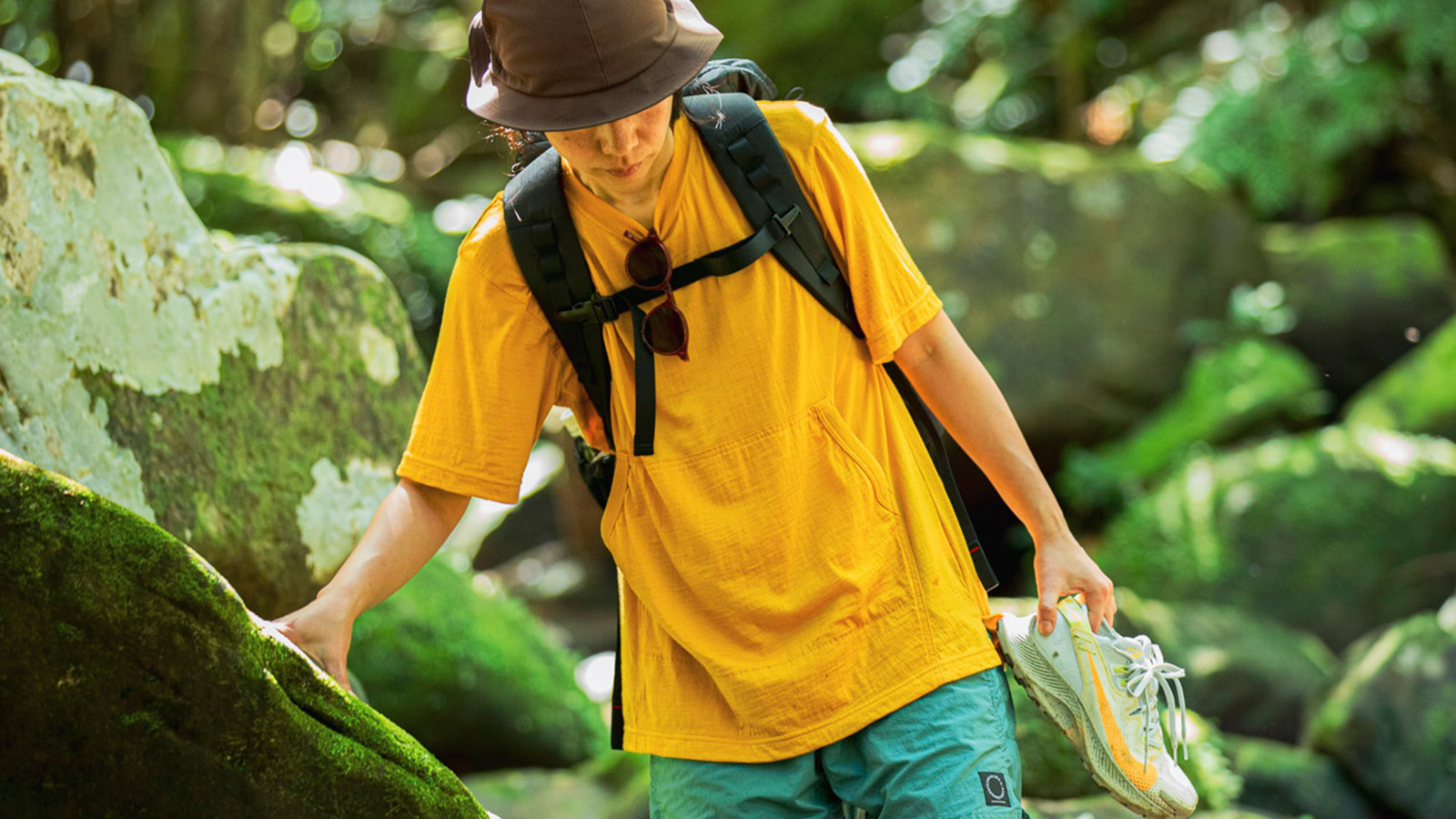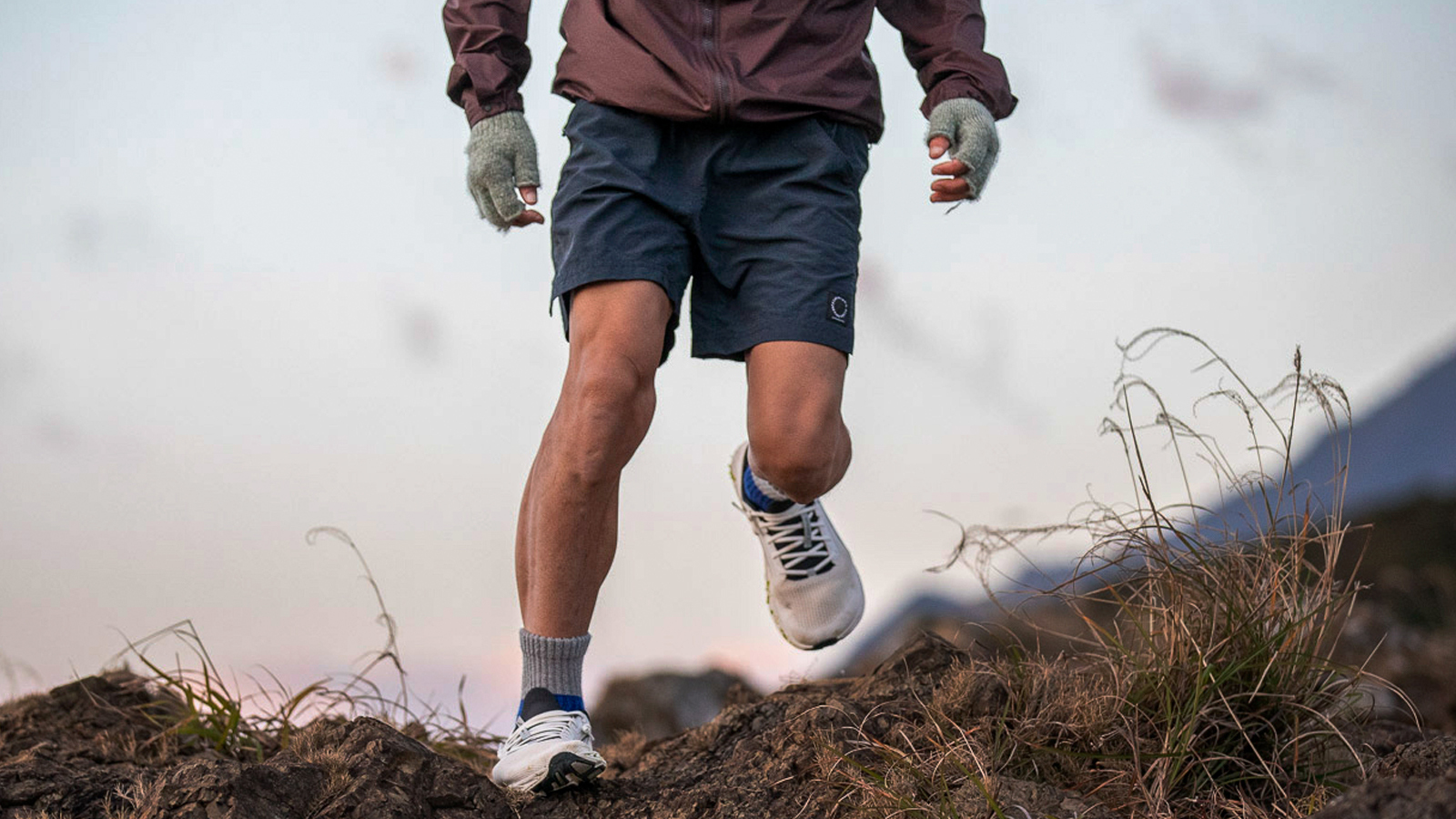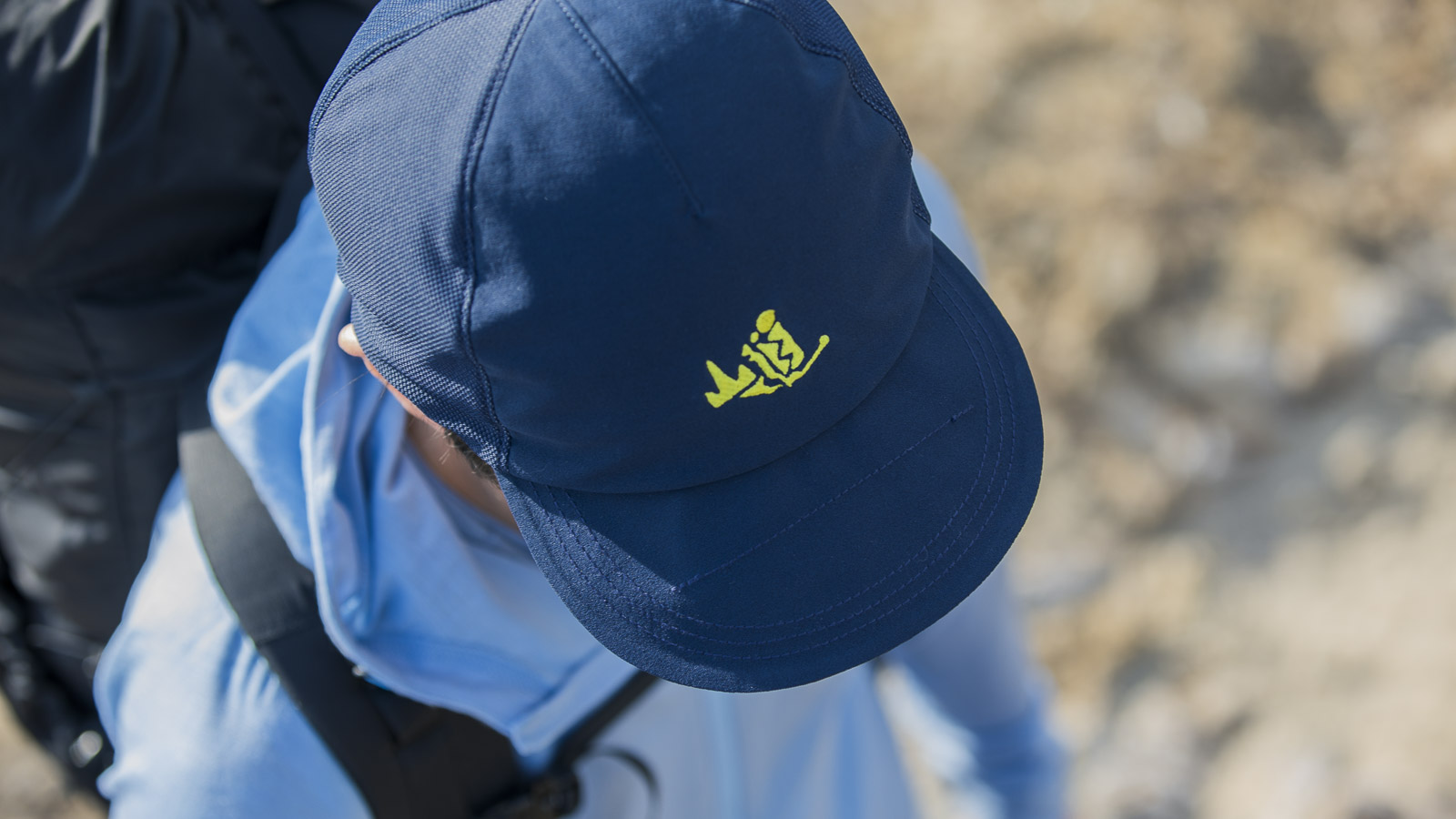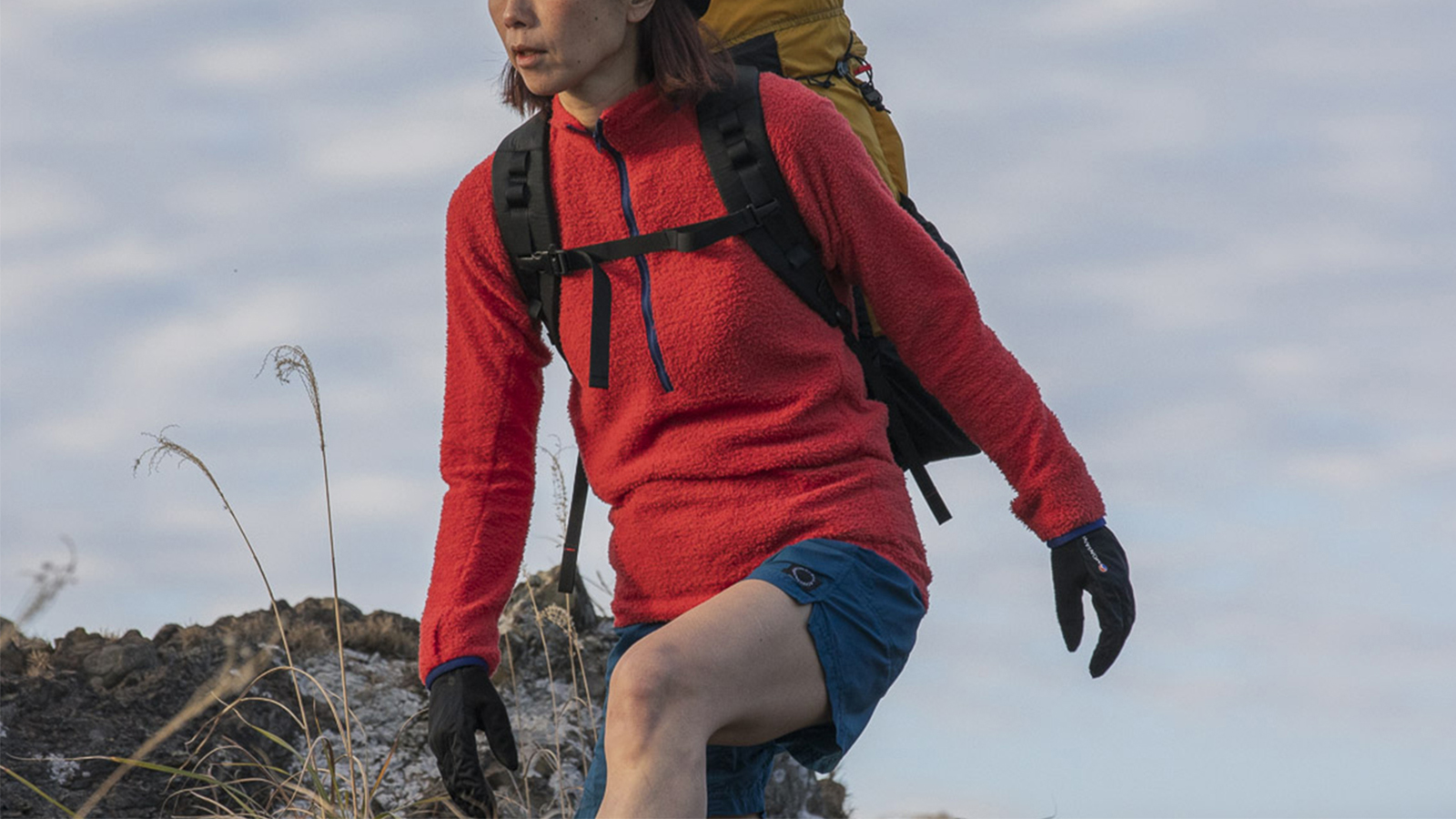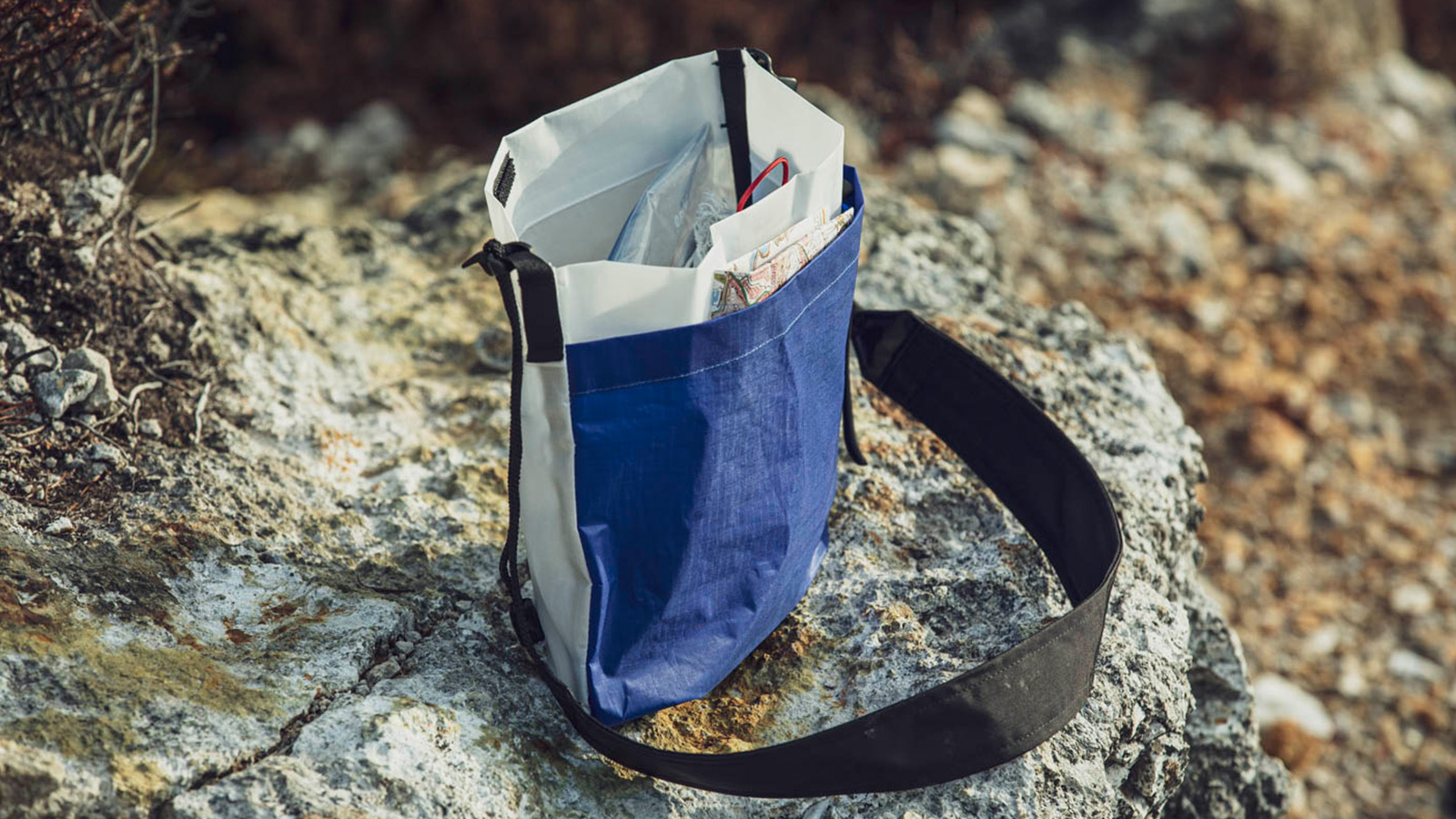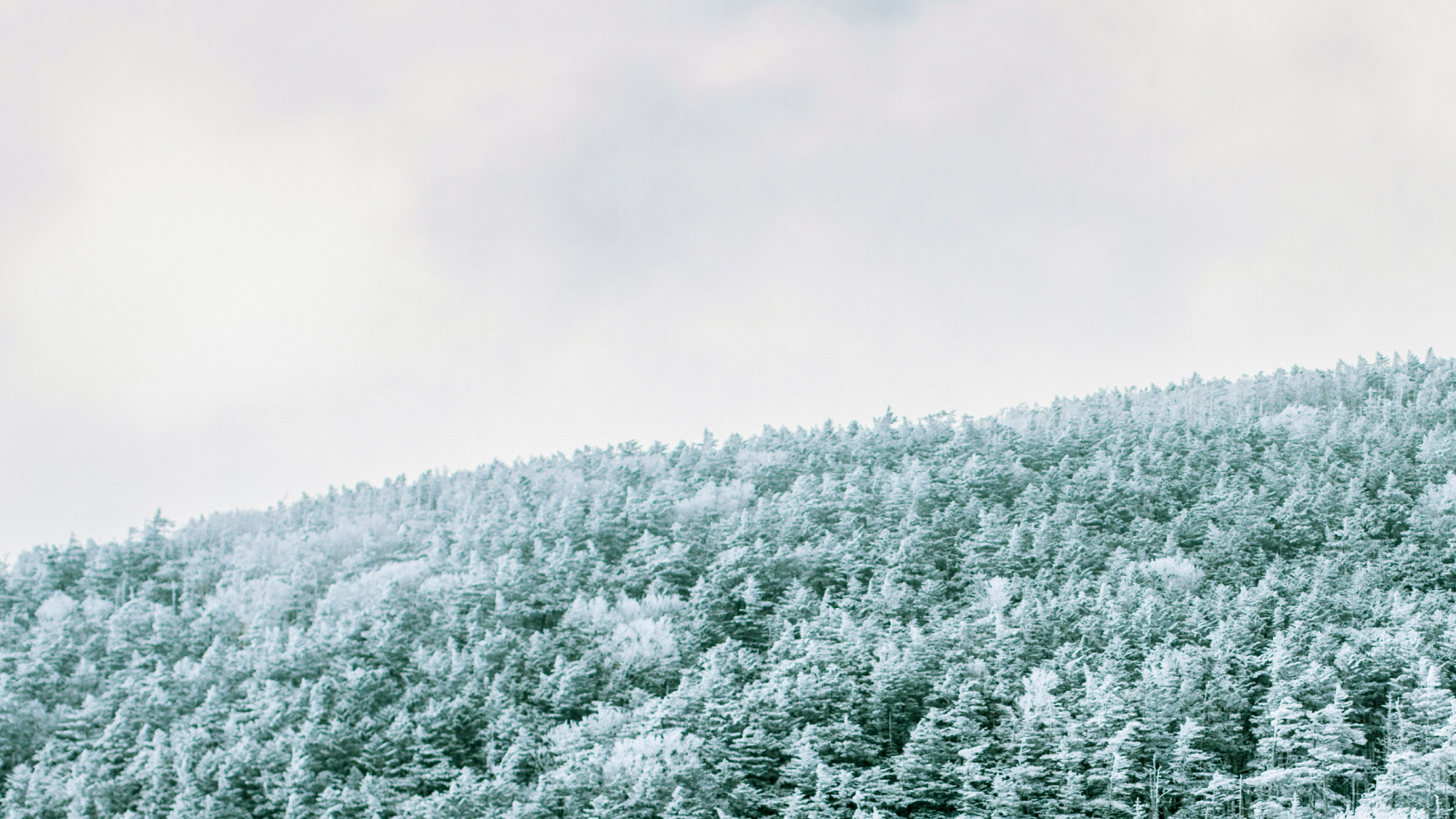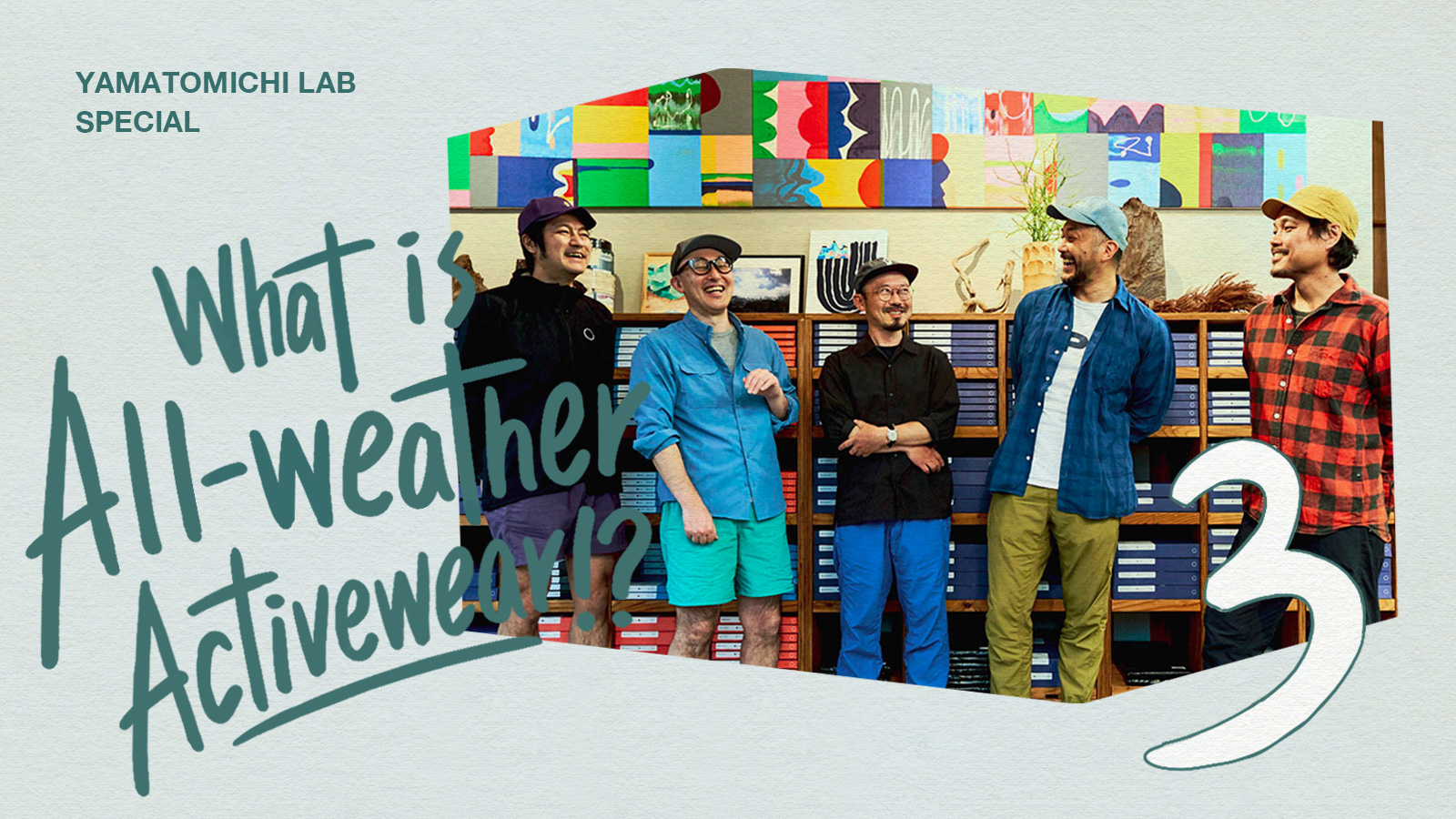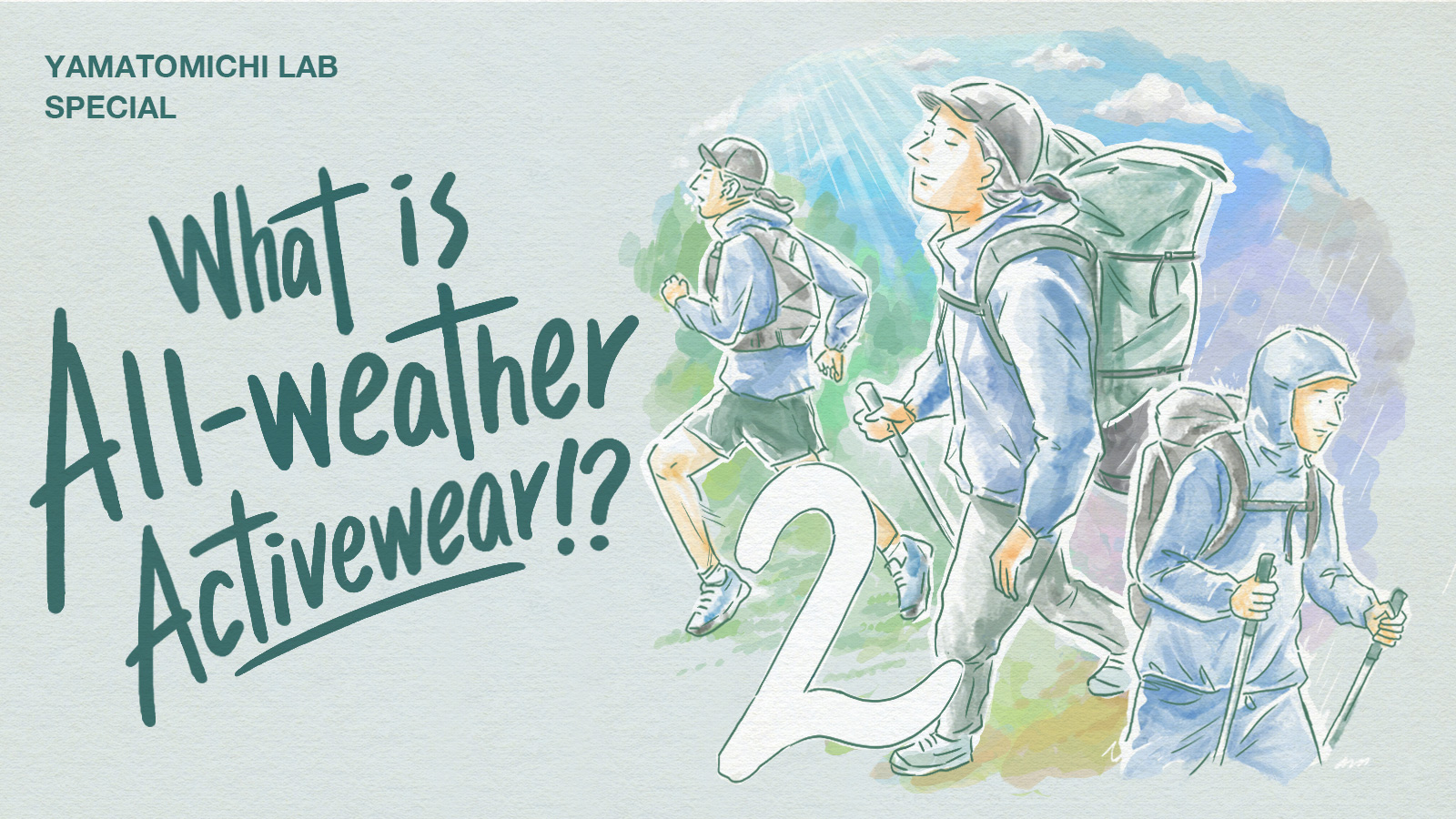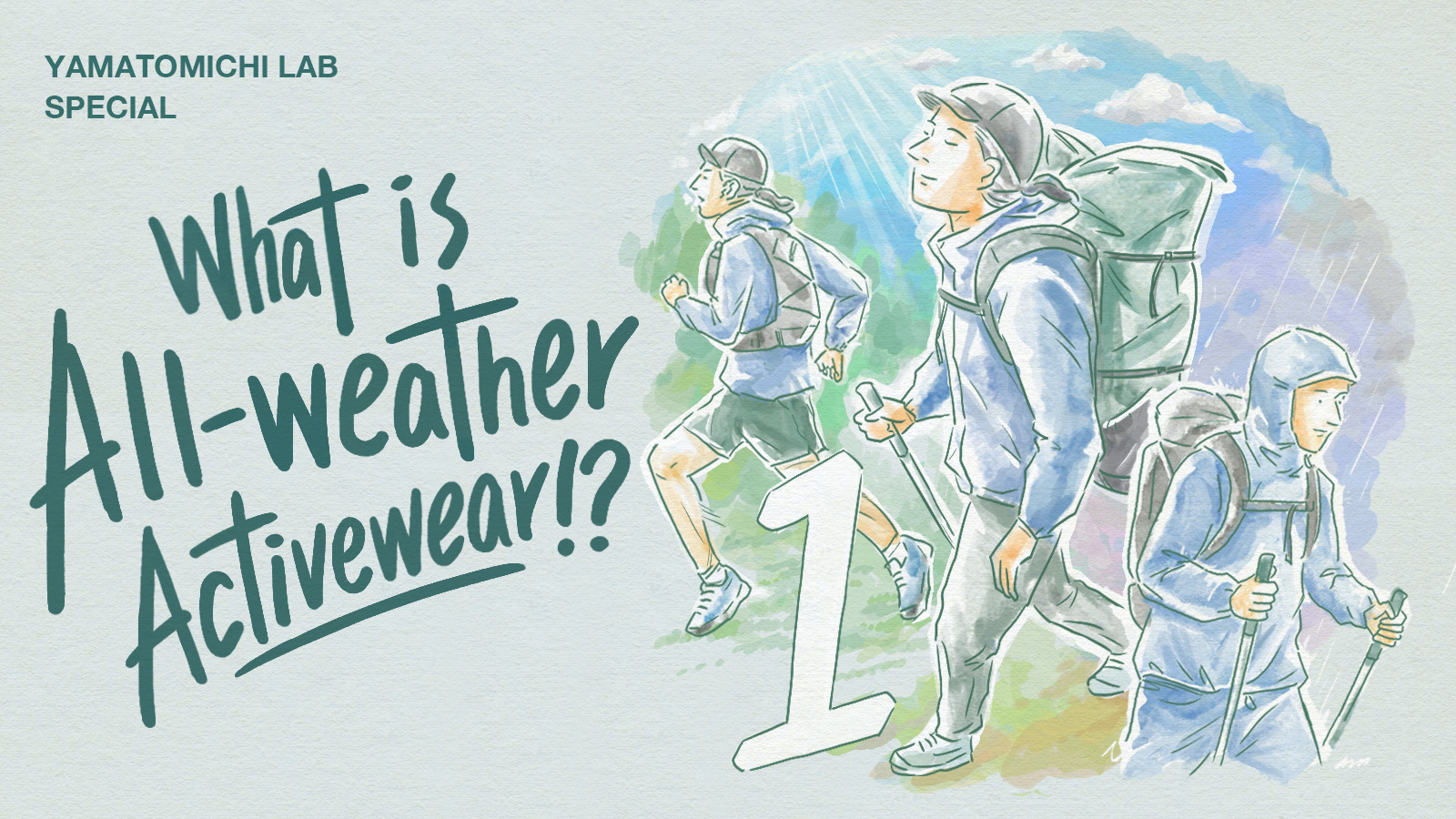All-weather Activewear #3
Editor: Masaaki Mita
Footnotes: Takahiro Watanabe
Photography: Hikaru Otake, Masaaki Mita
All-weather Activewear #3
Editor: Masaaki Mita
Footnotes: Takahiro Watanabe
Photography: Hikaru Otake, Masaaki Mita
A three part special series on rainwear, following the release of our All-weather series. An All-weather Activewear with nanofiber membrane technology.
In this third installment, we invited a few friends to chat about our new line of Activewear.
Welcome Tomoya Tsuchiya of Hiker’s Depot, one of the most fun UL Hiking Stores in Tokyo and Kei Kuwahara of the Trail Running store Run boys! Run girls!
We had them test the All-weather series and asked them about their impressions and their recommended layering methods.
We covered a lot of ground and we hope this interview will help you understand the current rainwear scene. Enjoy!

Interview on May 18th, 2021: from the left; Takahiro Watanabe, Tomoya Tsuchiya, Akira Natsume, Kei Kuwahara, Masaaki Mita
The History of Rainwear
Development in Breathability
Akira First of all, I think that people have always wanted breathable rainwear. I’d like to start by looking back at what specific needs on breathability or moisture/air-permeability there have been throughout the history of rainwear. I think both of you have witnessed the evolution of rainwear in your stores, but can you talk about what users have been looking for from the standpoint of hikers and runners?
Tomoya In the old days, rainwear used to be made of oiled paper and so waterproofness has been around for quite a while. Later, when rubberized fabrics were adopted, the problem was not so much the rain seeping in, but the moisture within the clothes caused by sweat. Then Gore-Tex (*1) introduced the idea of “moisture-permeability”, and people were amazed with the comfort. That’s when things started to change dramatically in rainwear. From then on rainwear had to be more than just waterproof, it had to be breathable. Then, I think the next dramatic change came when Neoshell (*2), a waterproof and air/moisture-permeable fabric that was introduced in 2011. The Neoshell was air-permeable, and supposedly better at ventilating than other moisture-permeable fabrics. My first impression was that it wasn’t so warm. People thought the reason for this was because of the air-permeability and that the wind was able to penetrated from the outside, but this wasn’t true. It was because the jacket was good at keeping you dry inside, and so heat escapes as moisture evaporates, and as a result, it keeps you cool. In my opinion, this was a new phase in rainwear.
*1: Gore-Tex is a pioneering waterproof moisture-permeable fabric developed by Gore & Associates in the 1970s. It is an ePTFE (Teflon, a hydrophobic water-repelling material) membrane with countless micropores, laminated to outer and inner fabric, which allow humidity to escape through the pores but the air cannot permeate. The membrane has a hydrophilic coating to prevent contamination from sebum and other substances.
*2: Neoshell is a waterproof and breathable fabric developed by Polartec. It is waterproof and moisture-permeable with a nanofiber membrane made of microfibers formed into a mesh-like structure with countless gaps. Not only is it moisture-permeable, but also air-permeable.
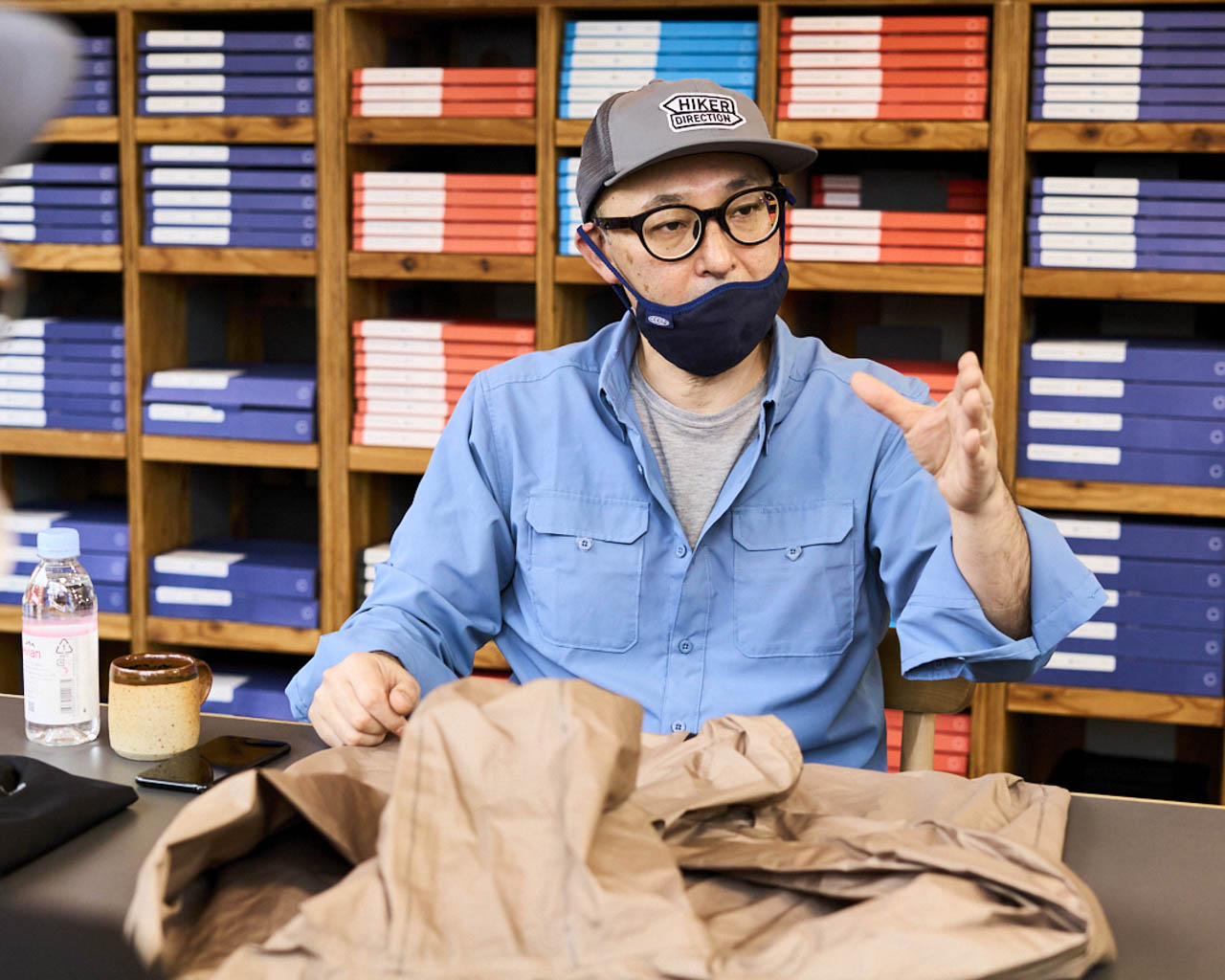
Tomoya Tsuchiya, Hiker’s Depot
Kei Since I’m a runner, the lighter the better. However, we runners realized early on that the published specifications of rainwear often doesn’t match how we actually feel in terms of moisture-permeability. They all get stuffy (laughs).
Tomoya Yeah (laughs).
Kei Then, OMM introduced rainwear made of eVent (*3). I thought eVent was a breathable fabric but it was still stuffy during runs. Next, the NeoShell came out. I realized that depending on how and where you use it, its breathability was worth a try for running. Also, not directly related to breathability, but I was very impressed with Gore-Tex Shakedry(*4) for its water repellency. Water repellency is just as important as moisture-permeability and waterproofness in rainwear, and Shakedry has permanent water repellency. Nowadays, I feel like I have more options after the release of The North Face Futurelite (*5), making it more fun with a larger selection to choose from.
*3: The eVent is a waterproof and moisture-permeable fabric developed by General Electronics in 1999. It uses a hydrophobic porous ePTFE membrane like Gore-Tex, but without the hydrophilic coating, and is said to be much more moisture-permeable than Gore-Tex. The eVent was made popular with OMM’s Ether Jacket when it first came out in Japan.
*4: Gore-Tex Shakedry is a waterproof and moisture-permeable fabric by WL GORE & ASSOCIATES in 2006. ePTFE membrane functions as the outer layer to achieve permanent water repellency, but its durability is considered inferior to that of ordinary waterproof moisture-breathable fabrics because the membrane is exposed.
*5: Futurelite is a waterproof and moisture-permeable fabric by The North Face in 2019. It uses nanofiber technology and air-permeable.
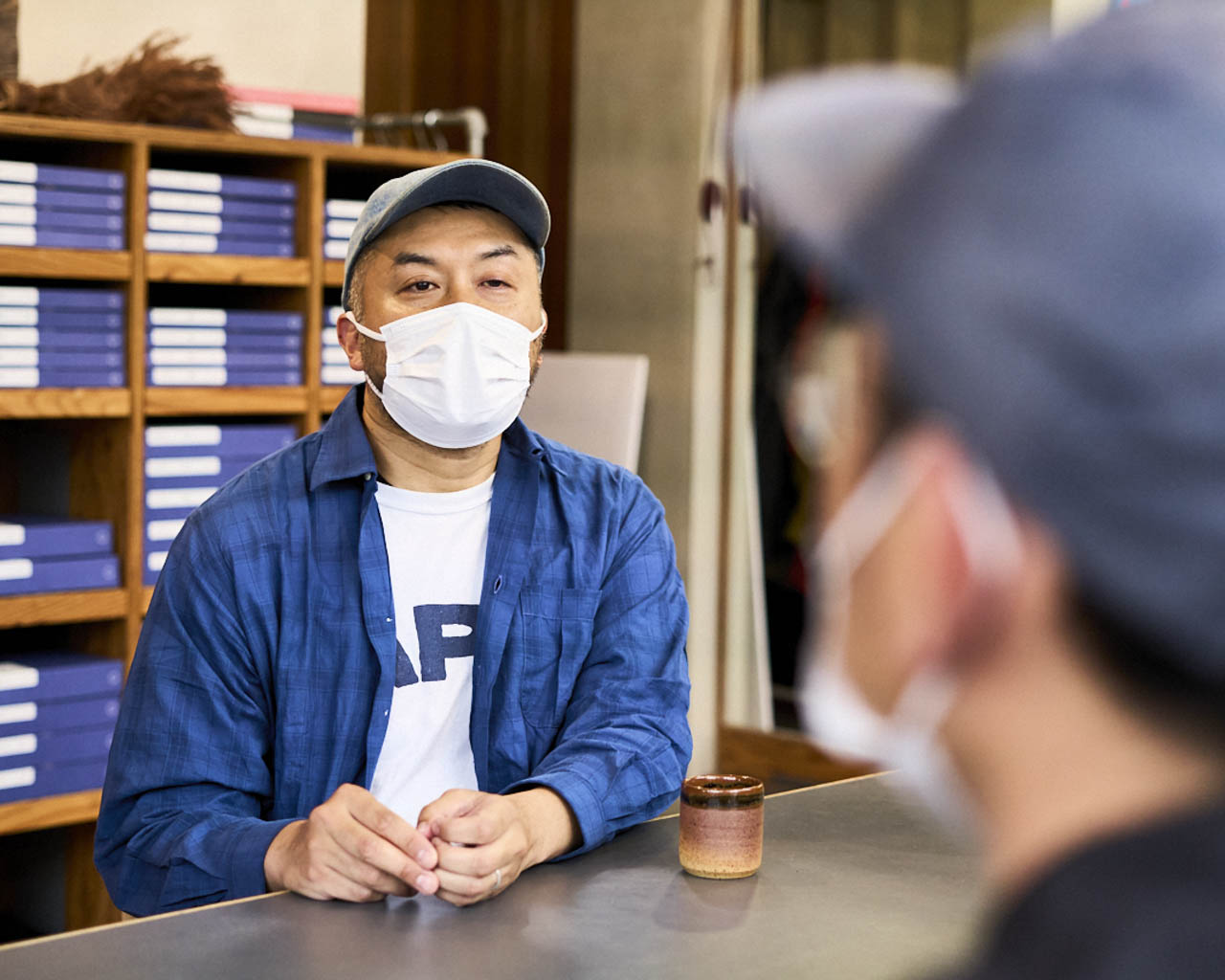
Kei Kuwahara, Run boys! Run girls!
Tomoya We talked about changes in rainwear throughout history, so let’s move on to our personal experiences. My choice of rain gear has shifted from time to time. In the early 2000s, before I started my store and when ultralight hiking was in its earliest days, I was obsessed with how far I could go with a silnylon poncho(*6). But after I started the store, I realized that this was a rather extreme approach (Laughs). Afterwards, I used a rain jacket for the first time in many years when I hiked the Colorado Trail(*7) for a month and the elevation was high with light snow.
I was trying to keep my weight down, so I used the Outdoor Research’s Helium Jacket(*8), made of the hydrophilic non-porous Pertex Shield. Then Montane released the Spektr Smock(*10), and the fabric eVent came into the spotlight. Next, Teton Bros. introduced the Tsurugi Jacket(*11), made of Neoshell and I was convinced that I needed to focus on moisture-permeability. So, I shifted from being a poncho connoisseur, to focusing on lightness, and on to moisture-permeability, chronologically. But now with air-permeability in the mix, I have more options, and I’d come to think that I have to revise my setup.
*6: Silnylon is a thin nylon fabric coated with silicone on both sides to provide high water repellency. The silnylon poncho is lightweight and highly ventilated, making it popular among ultralight-oriented hikers around 2010 when there was no such thing as ultralight rainwear.
*7: The Colorado Trail is a 486-mile-long (app. 782km) trail in Colorado, with the highest point over 4000 meters above sea level. Tsuchiya visited in 2011 and 2012.
*8: The Helium Jacket is a rain jacket by Outdoor Research, released in 2010 and quickly became popular among UL hikers due to its revolutionary lightness of less than 200g.
*9: Hydrophilic non-porous Pertex Shield is a waterproof and moisture-permeable membrane used in the Helium Jacket. It is a 2.5 layer fabric (two layers of outer fabric and membrane, plus a printed inner layer to prevent sticking to the skin). It is a non-porous polyurethane membrane that attracts water (hydrophilic). While it is lightweight, its breathability is inferior to hydrophobic porous membranes and nanofibers.
*10: The Spektr Smock is a rain jacket released by Montane in 2012, made of 3-layer eVent (see note 3 above), weighing 210g (M size), which was extremely light for its time, and had a very unique anorak design with a zipper.
*11: The Tsurugi Jacket is a rain jacket released by Teton Bros. in 2013. The Polartec’s Neoshell (see note 2 above) fabric attracted attention, which was a cutting-edge material at the time and highly air-permeable.
Did you like the All-weather?
Akira We had you two test the prototypes, what did you think?
Kei I compared the All-weather with Futurelight and Shakedry, which are competing membranes in terms of material properties, as well as a standard windshell jacket. All of them were tested over the span of about two weeks, running for about 1-2 hours at temperatures of about 15 degrees Celsius and humidity of about 50%-60%. None of them felt unbearably stuffy, but if there was a difference. I think the Shakedry felt slightly hotter than the other jackets, and I expected the windshell to be very comfortable, but It wasn’t as good as I thought because the material was so soft that it stuck to my skin. The windshell was somewhat more comfortable when the sun was out, but since the All-weather is breathable, I was able to run comfortably up and down hills, which I was impressed by.
In particular, the All-weather fabric was less likely to stick to my skin because of its unique firmness, which can be a good reason to choose this over a regular windshell. But when I stopped running and walked to cool down about a kilometer before I got home, I got cold because of the extraordinary air-permeability of the All-weather. After you stop or finish your workout, you might need to be a little creative in order to keep warm. However, when you stop or when there is a breeze, you can’t deny how nice it feels, because the inside feels dry and comfortable with this type of breathable clothing.
Akira Did you ever feel the same comforting dryness when you wore, for example, the Shakedry with no air-permeability?
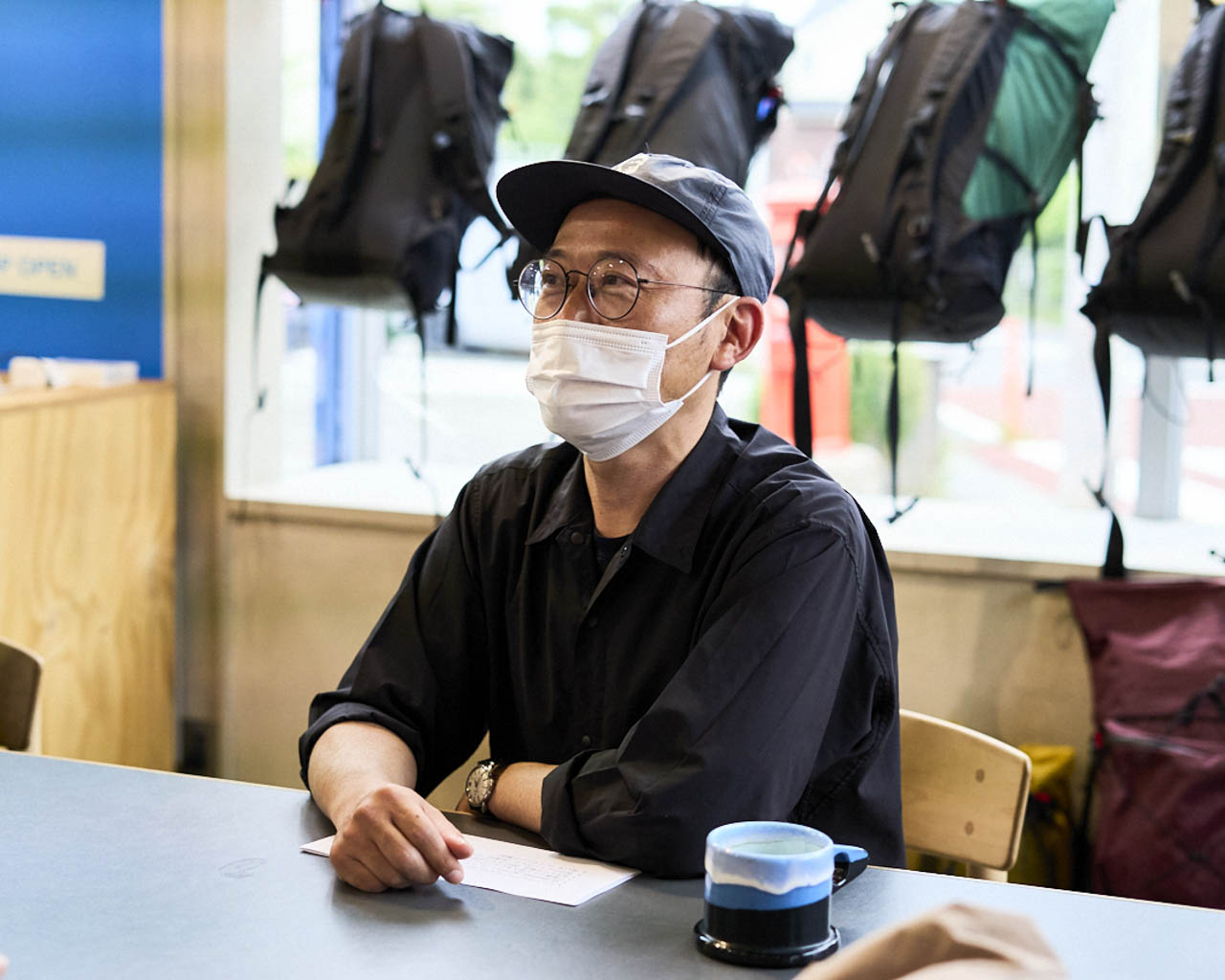
Akira Natsume, Yamatomichi
Kei The Shakedry was comfortable, possibly because of its structure of layers. Personally, what I like about the Shakedry is that it has no facing layer (*12), allowing the moisture to pass directly to the surface.
*12: See above note *4.
Tomoya I think what counts the most is the speed of moisture-permeability. Gore-Tex fabrics, including Shakedry, share a similar mechanism and the speed of moisture-permeability to hydrophilic non-porous membranes (*13). But basically, the nanofiber membrane has a hollow, sponge-like structure and it dries out faster than Shakedry, so I think there is less moisture left on the inside of the clothes. I imagine that’s why when the wind comes in you feel dry all at once.
*13: See above note 1 and 9. Gore-Tex has a hydrophilic coating that absorbs the humidity inside the fabric and then releases it outside, supposedly functioning like a hydrophilic non-porous membrane.
Akira What did you think Tsuchiya-san?
Tomoya Frankly, it’s a dream come true. Back in 2010, when Akira visited my store, we used to talk about how nice it would be if a wind jacket could replace rainwear. We used to talk, if there was a breathable windshell jacket with superb water-repellency, that could replace ponchos, which ended up impossible because of its low water-pressure resistance. Now, we have the All-weather with excellent breathability, waterproofness, and lightness equivalent to windshell jackets. If you’re walking on a flat surface, there is almost no discomfort at all. So, yeah my dream jacket from 10 years ago has finally come true.
Takahiro So, with current rain jackets, do you feel uncomfortable when walking?
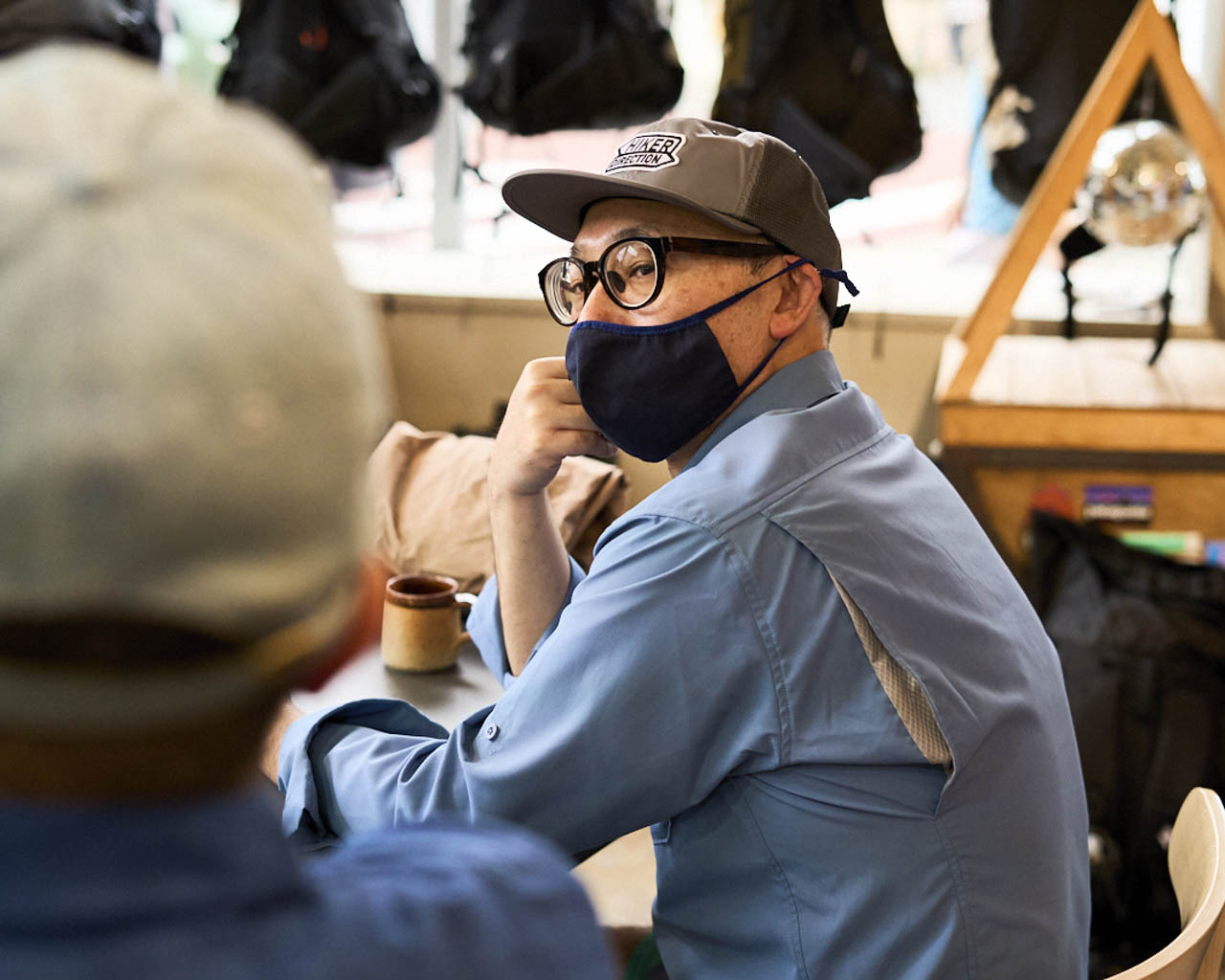
Tomoya For sure. Especially with hydrophilic non-porous fabrics which stick to my wet skin. But please keep in mind that it was cool when I tested the All-weather, so I don’t know how I’d feel in warmer seasons. I’ve taken it with me to the mountains a few times, and when the temperature is around 10°C, even when the sun is out and there’s no wind, of course, my back was sweating, but the breathability maintained a great deal of comfort. I felt a clear difference with existing products.
I’m not sure how it would feel if the exercises were more intense or if the temperature were warmer, but I felt that it has enough breathability that it can be used as a windshell at around 10°C, which is what you would expect in the summer with mountains in Japan. Recent windshells, such as Patagonia’s Houdini Jacket (*15) or Black Diamond’s Distance Windshell (*16), focus relatively more on windproofing. However, Windshells used to emphasize breathability (*17), but they are now leaning towards being windproof and warm, and I felt that the All-weather is equally good.
However, as Kei mentioned, it got really cold when I stopped walking, and this surprised me. I’m currently working with Trail Bum, and their Walker Shell Jacket uses Pertex Shield Pro (*18), which is the same fabric as Yamatomichi’s UL Rain Hoody PU Sosui, and I was impressed by its breathability. But the level of chill I felt with the All-weather when I stopped was completely different. We should pay special attention on layering with the All-weather. The All-weather is not the perfect Activewear, but I have to admit that it’s very innovative.
*15: Houdini Jacket is a windshell jacket introduced by Patagonia in 2004. The fabric has changed since the original version but is popular for its lightness of about 100g and compact packability.
*16: Distance Windshell is a windshell jacket released by Black Diamond in 2019. Features high water repellency.
*17: Some say that the Houdini jackets of the past were more air/moisture-permeable than the latest version.
*18:The Pertex Shield Pro, unlike the hydrophilic Pertex Shield (see above note 9), is a hydrophobic porous polyurethane membrane.
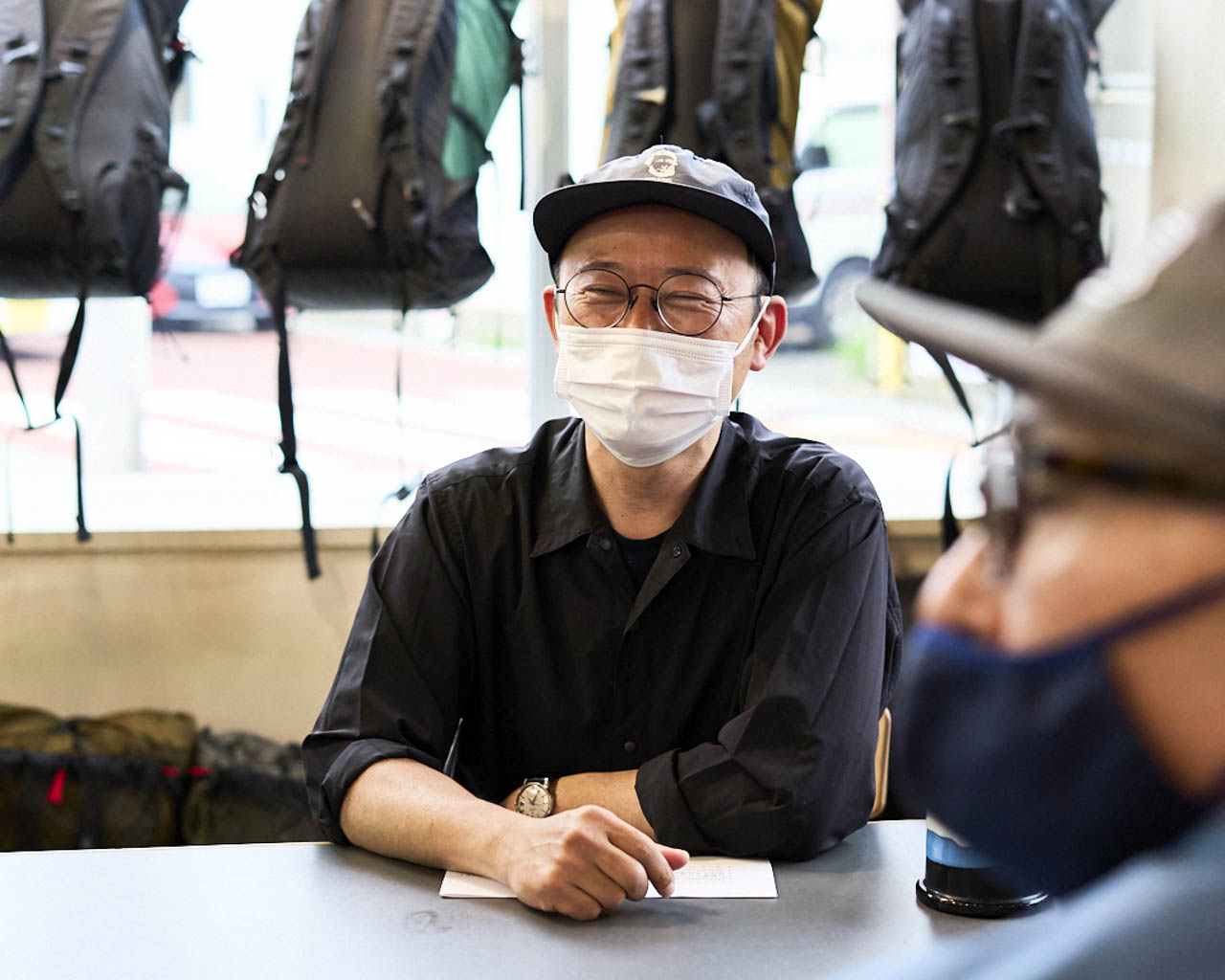
Akira Thanks. As we developed this product, I was impressed by the performance as activewear, but at the same time, I got surprisingly cold when I stopped moving. I was convinced that we have to be careful with how we use it. That’s the reason why I decided to categorize it as activewear instead of rainwear, to let hikers know the advantages and disadvantages of the product by actively using it. By wearing it at all times. This concept led to the name; All-weather.
Tomoya As this is not rainwear in the conventional sense, protection from the cold is undoubtedly necessary. Especially in the mountains, if you use it above the tree line, like before the end of the rainy season or after mid-September, you have keep in mind that the All-weather is not warm enough. We as store owners need to let the customers know that, basically, this is the same as a windshell or shirt when it comes to keeping your body warm.
Masaaki So for me, I would be fine with a T-shirt when hiking below the tree line, but as soon at I make it to the peak or the ridge, the wind would start to blow and I would want something to wear real quick. In your opinion, do you think that the All-weather would be good for such situations?
Tomoya Yeah, I think it’ll be great for that as long as you keep moving.
Akira Yes, the All-weather is windproof.
Tomoya You know those situations when it’s windy and cold, and you want to rely on your rainshell over the thin windshell to keep warm? The All-weather is equivalent to a windshell, in terms of thermal insulation. Basically, it’s windproof and reliable, but it’s not warm because the heat escapes. You will probably get cold if you are not moving as the moisture evaporates outside. That’s something you need to be aware of. It’s fine to wear on ridgelines, but it’s just like a shirt or windshell in terms of thermal insulation performance.
Masaaki It is probably impossible to achieve both breathability and thermal insulation at this level of lightness. Considering the thinness of the fabric, lightweight and air-permeable clothes are hard to come by…
Tomoya Yeah, impossible.
Akira I think this is what I’ve been looking for; rainwear that can be used as activewear. However, when I take a close look at the All-weather, I realize that the fact that it can be used as activewear means that it also has poor thermal insulation. On the other hand, I’ve come to realize that even though conventional rainwear tends to get stuffy, thats what makes it have higher thermal insulation.
Kei It’s a matter of which feature you value more. You may find that your rain jacket has low breathability and is stuffy, but in a different situation, you think it’s good because it keeps you warm. The point is a good balance between the intensity of the exercise and the temperature. When the exercise gets less intensive and you choose the All-weather, as I mentioned earlier, you suddenly feel cold.
UL All-weather Layering Methods
Akira That’s exactly the point! Now, lets talk about layering with the All-weather.
Kei Okay, I’ll start. I highly recommend hydrophobic innerwear(*19) as a first layer, especially for trail running. It’s breathable, so it doesn’t get stuffy even if you keep running, and you are able to maintain a great deal of comfort. However, of course you do still sweat. You don’t notice the sweat too much while running, but even with the quick-drying base layer, quite a lot of sweat will build up. When running you will most likely stop at times, and when you do, often your body temperature will drop. Therefore, it’s better to wear a first layer or dry layer. Plus, the first layer keeps warm air close to your body, in case you have to stop. I thought of wearing a windshell on the inside, but then I realized that it would be redundant, because the All-weather is also great as a windshell. So, I brought with me a lightweight windshell with a thin layer of synthetic insulation designed for trail running. I’ll keep one of these lightweight layers with me after running to prevent my body heat from escaping. These two items are a must for me.
*19: hydrophobic innerwear Hydrophobic innerwear is a garment worn underneath a base layer. Hydrophobic and water repellent fabrics such as polypropylene and slightly thick mesh fabrics quickly absorb moisture from the skin and keep it away, thus preventing cold sweat.
Kei Kuwahara’s (Run boys! Run girls!) layering
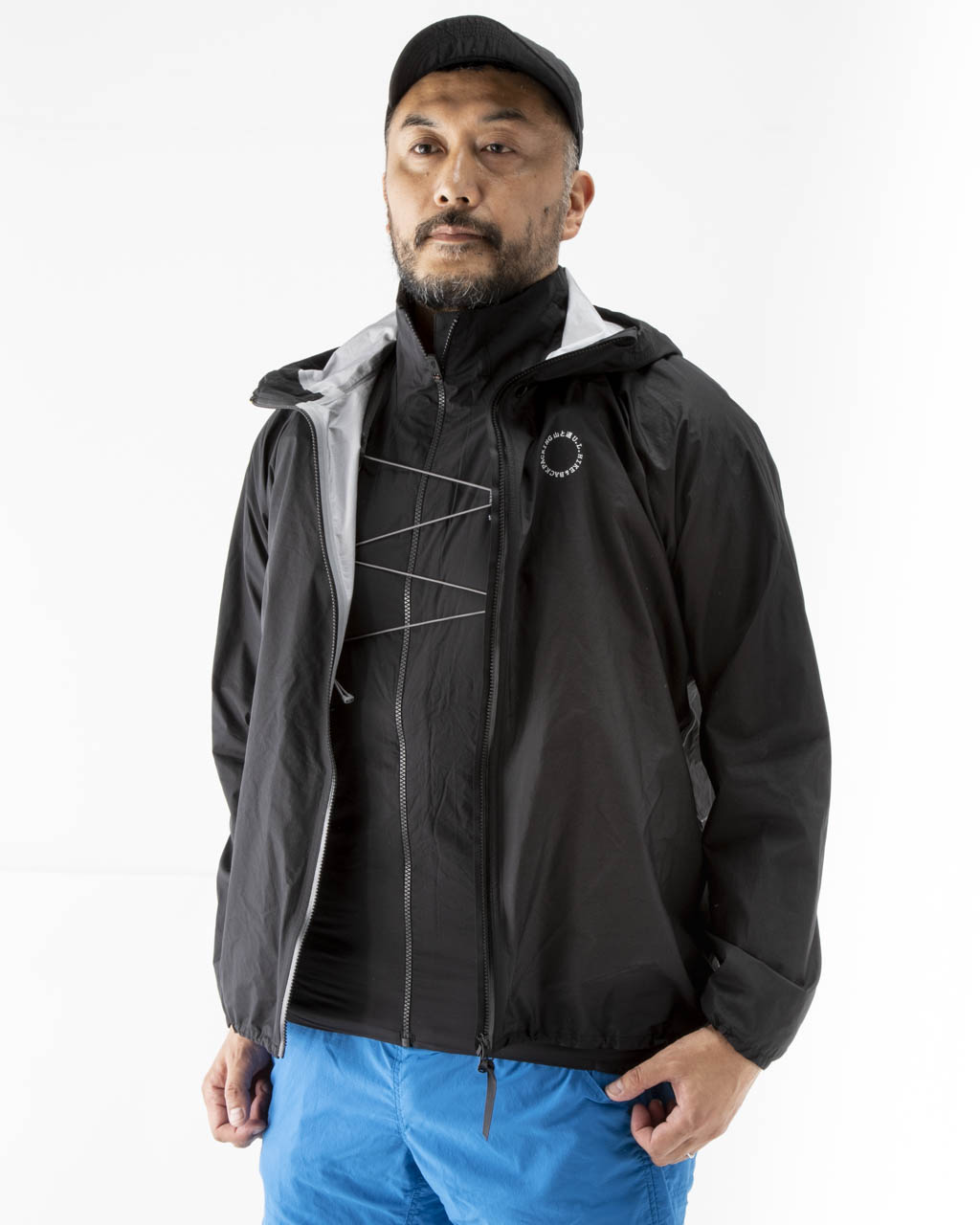
+Lightweight insulation (The North Face VENTRIX Trail Jacket)
Kuwabara’s idea for layering was based on what would fit in his trail running bag. He chose a 150g lightweight trail running insulation jacket, A windshell binded with thin insulation, to go with the All-weather to keep his body warm when not moving.
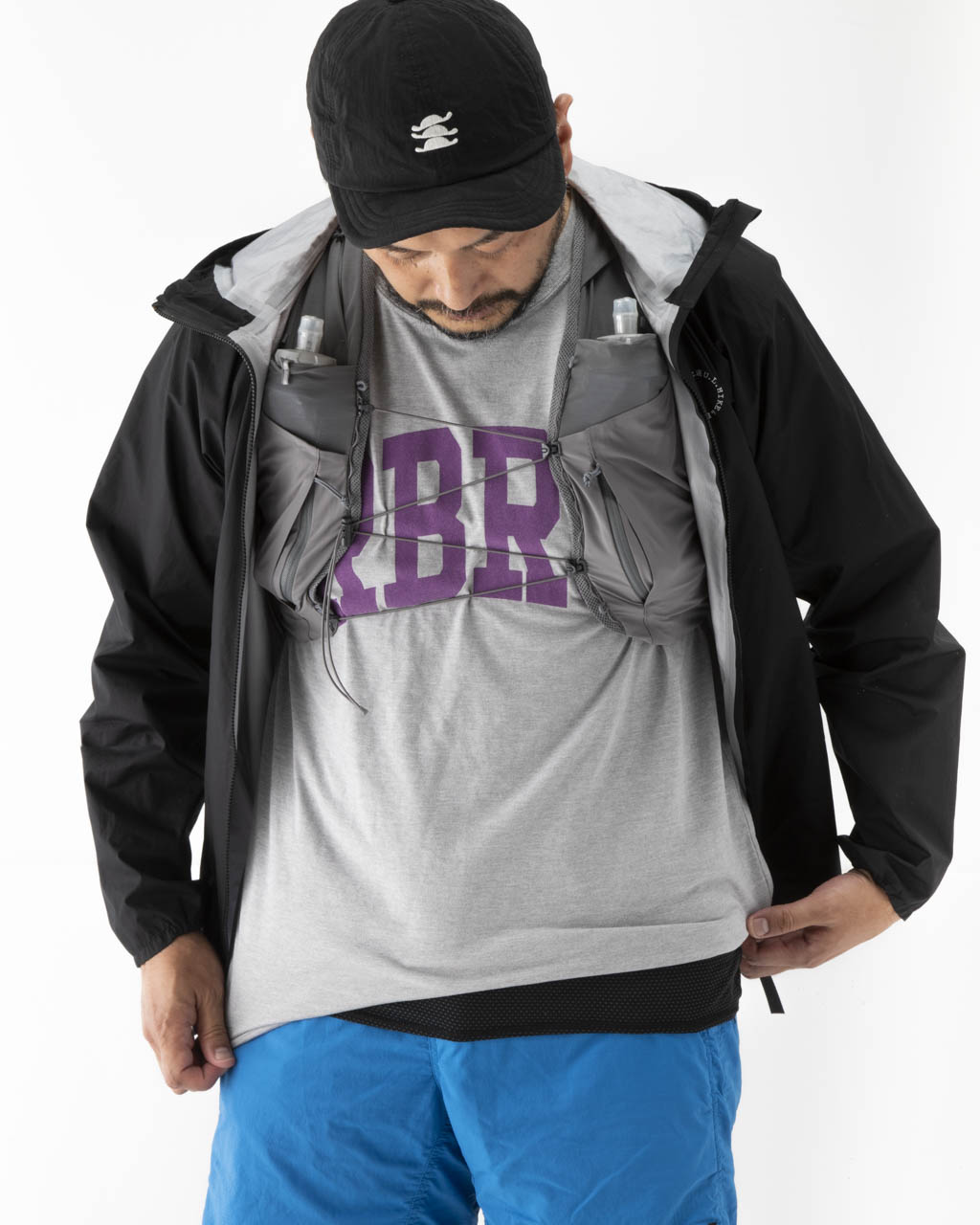
+First Layer (Onyone Breath Tech PP)
In running, the sweat you produce during exercise tends to lower your body temperature during when not moving. By wearing a hydrophobic first layer under your base layer, you can prevent sweat from adhering to the surface of your skin, which in turn prevents cold sweats.
Tomoya Unlike Kei, I thought that I should wear something over the All-weather. When I thought about how to prevent my body heat from being lost through vaporization, I realized that hikers tend to be a bit lazy, and avoid stopping to wear rainwear even when it’s raining. So, I concluded it’s better to wear something over a rain jacket, instead of taking off the rain jacket in the first place. I think the Yamatomichi’s Pertex Shield Pro Jacket (UL Rain Hoody PU Sosui) is also a good combination. I also think it’s effective to wear synthetic insulation over it, just for thermal insulation. Basically, there are no cold spots (*20) with synthetic insulation because there are no stitches, and it will keep the wind out. I thought it would be a good idea to use it like a belay jacket (*21). I haven’t had a chance to test it, so it’s just an idea.
*20: Natural feathers including down need to be sewn together to prevent unevenness within the garment, but sewing may cause cold spots, where warmth escapes. On the other hand, many synthetic insulations do not require sewing because they are originally formed into a sheet.
*21: Belay jacket are designed for belayers who secure (belay) climbers with ropes and other equipment. Belayers may have to wait for a long time, with little physical movement, and may need to prepare for cold conditions and sudden changes in the weather. For these reasons, belay jackets are often made with synthetic fiber insulation that retains its warmth even when wet as opposed to a down jacket.
Tomoya Tsuchiya’s (Hiker’s Depot) layering

+Sil-Poncho (Trail Bum Gnu Cape)
A UL hiker’s classic, a sil-nylon poncho but not as rain gear, but as an extra layer to improve warmth. The combination of rain gear and rain gear may seem odd at first glance, but it is a rational layering that uses the lightweight poncho to compensate for the lack of warmth of the highly-breathable All-weather jacket.
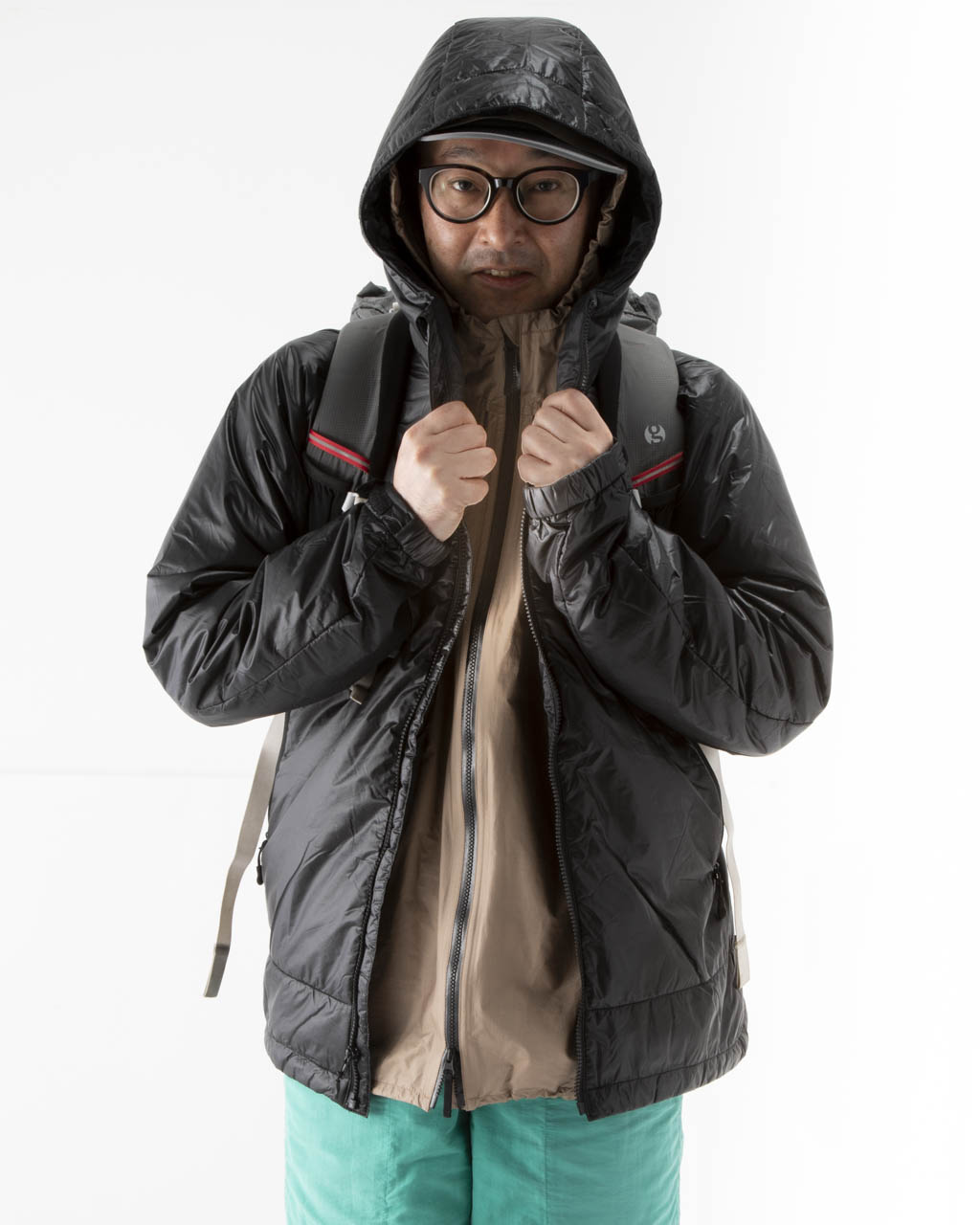
+Synthetic Insulation (Trail Bum Boaster Jacket)
A synthetic fiber insulation, worn like a belay jacket. The synthetic fiber cotton will not lose its warmth even if it gets a little wet, and it is windproof with few cold spots.
Akira Also, SOL’s emergency blanket (*22), often used as a groundsheet for floorless shelters is pretty handy too. I just stash it in my pack and I wear it when it’s cold, and the poncho version (*23) works just as well. The All-weather paired with an active insulation innerwear like the Alpha (*24) or the Octa (*25) is a great combination.
*22: SOL emergency blanket is an emergency blanket with vapor-deposited aluminum, which traps the heat radiated from the body and is also used as a groundsheet when camping.
*23: The poncho-shaped version is called heat-reflective poncho or survival poncho, sold by SOL.
*24: The Alpha is an active insulation material developed by Polartec. It has excellent breathability, quick-drying property, and thermal insulation for its lightweight. There are two types of Polartec Alpha: the regular Polartec Alpha and the Polartec Alpha Direct, which can be used by itself. The Direct is used in the Alpha Anorak and Light Alpha Vest/jacket of Yamatomichi.
*25: Octa is a hollow polyester fiber produced by Teijin Frontier Co. Looking at its cross-section, it has spines like the eight legs of an octopus. It is highly insulative, air-permeable, quick-drying, and lightweight. Used as a material for active insulation.
Akira Natsume’s (Yamatomichi) layering
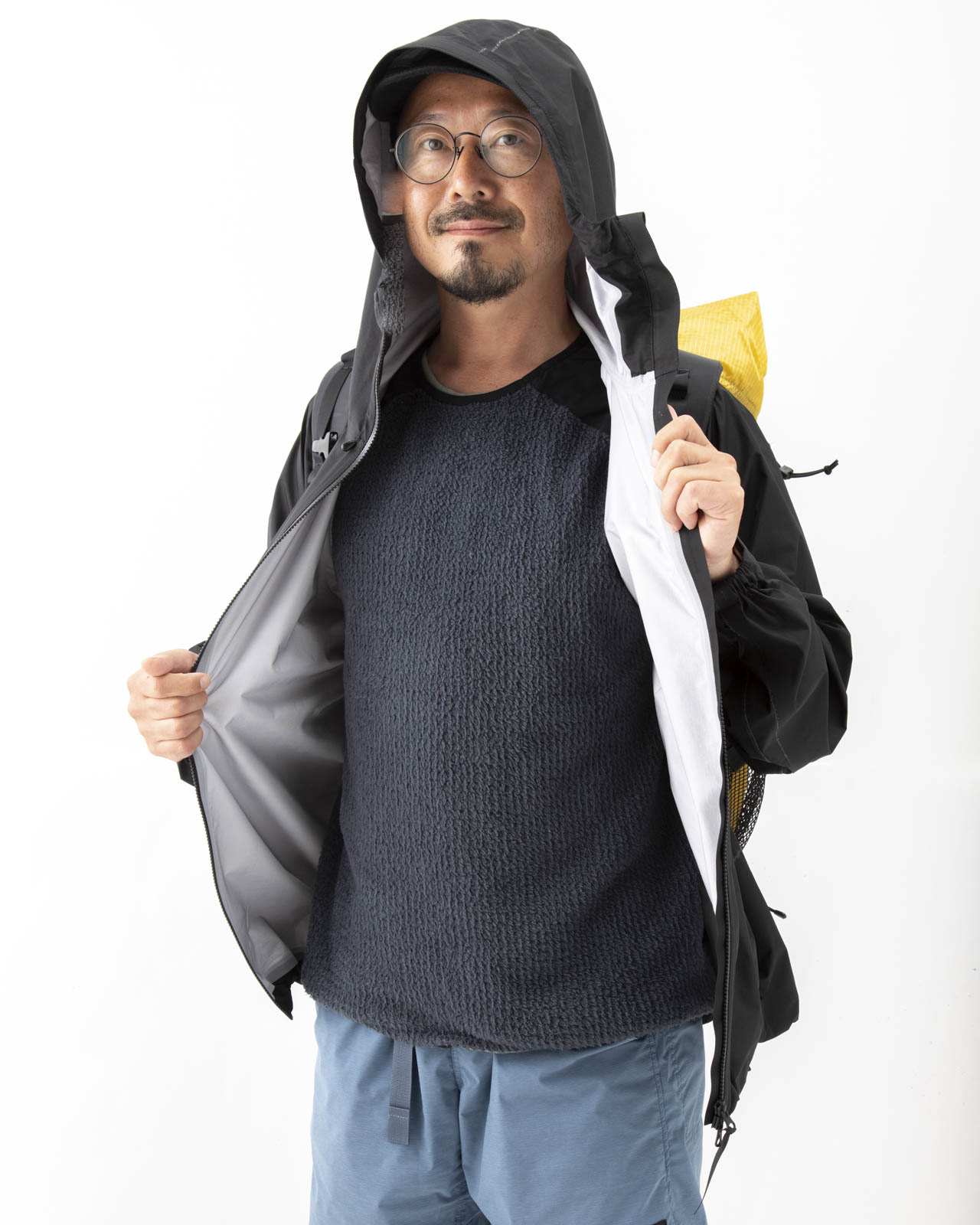
+Active Insulation (Yamatomichi Sample Alpha Vest)
Akira, layered a Polartec Alpha Vest from Yamatomichi, which will be released this upcoming fall. The highly breathable All-weather and the equally breathable active insulation are a perfect match.
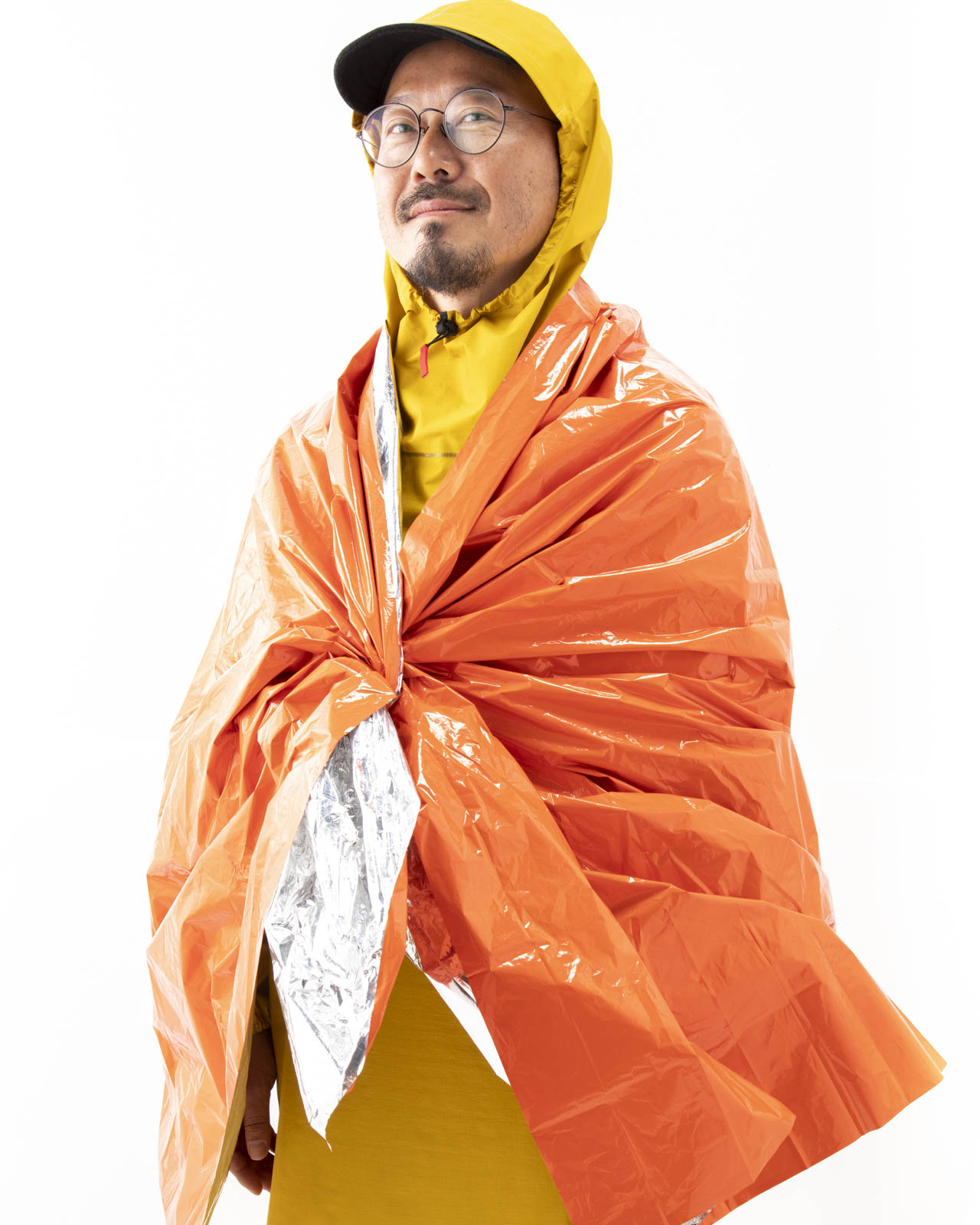
+Emergency Blanket (SOL Survival Blanket)
An emergency blanket that doubles up as groundsheet and a blanket. The fundamentals in reducing weight is to have multi functional gear. The emergency blankets are ultralight and surprisingly great at retaining heat.
Takahiro Watanabe’s (Yamatomichi Lab) layering
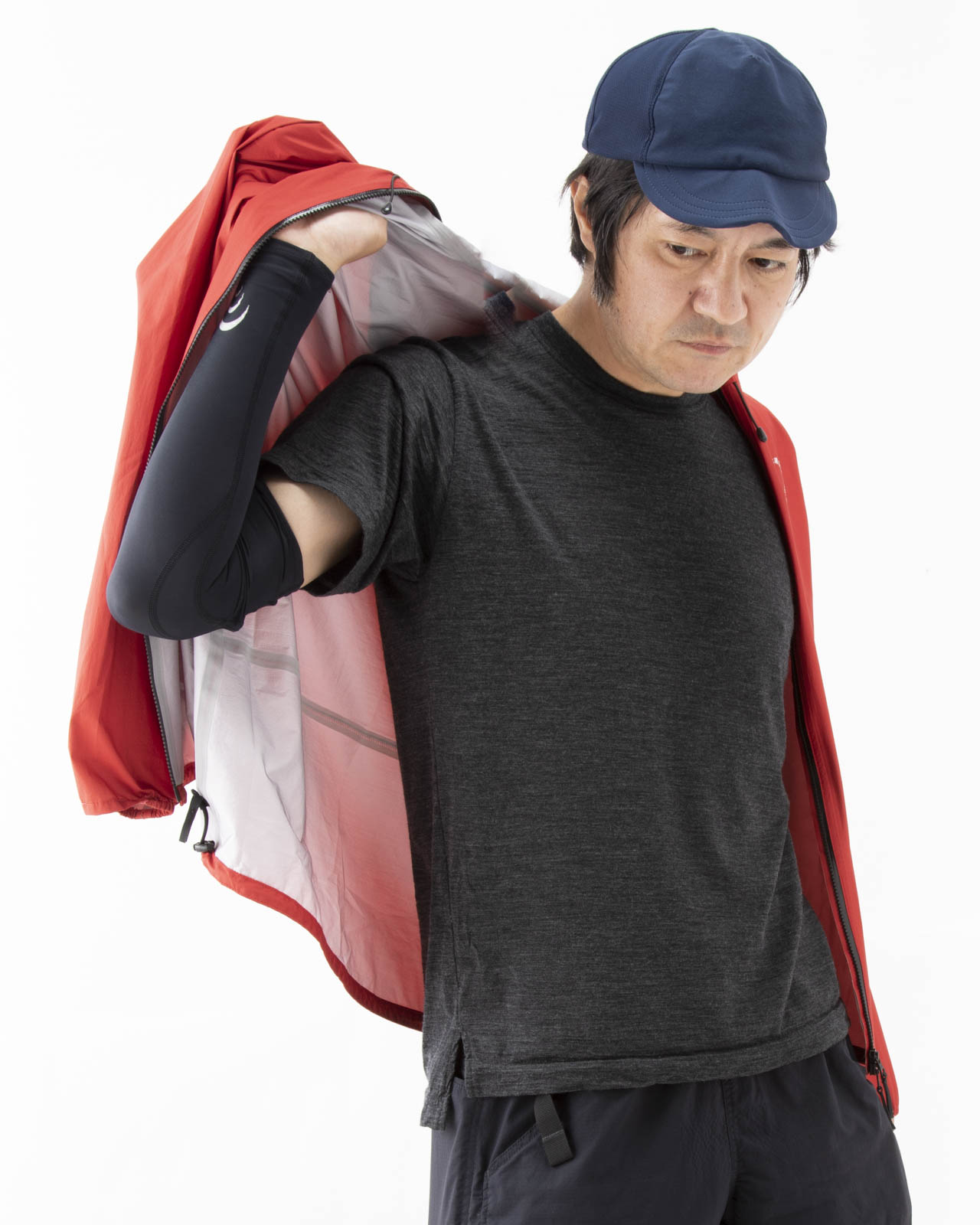
+Sleeves (C3 Fit Inspiration Arm Sleeves)
Watanabe is a runner who likes high-intensity trail running. When layering over short sleeves, no matter how breathable the all-weather material is, the arms that are in direct contact with the bare skin can feel uncomfortable and cold due to sweat clinging to them, which can be eliminated by wearing arm covers.
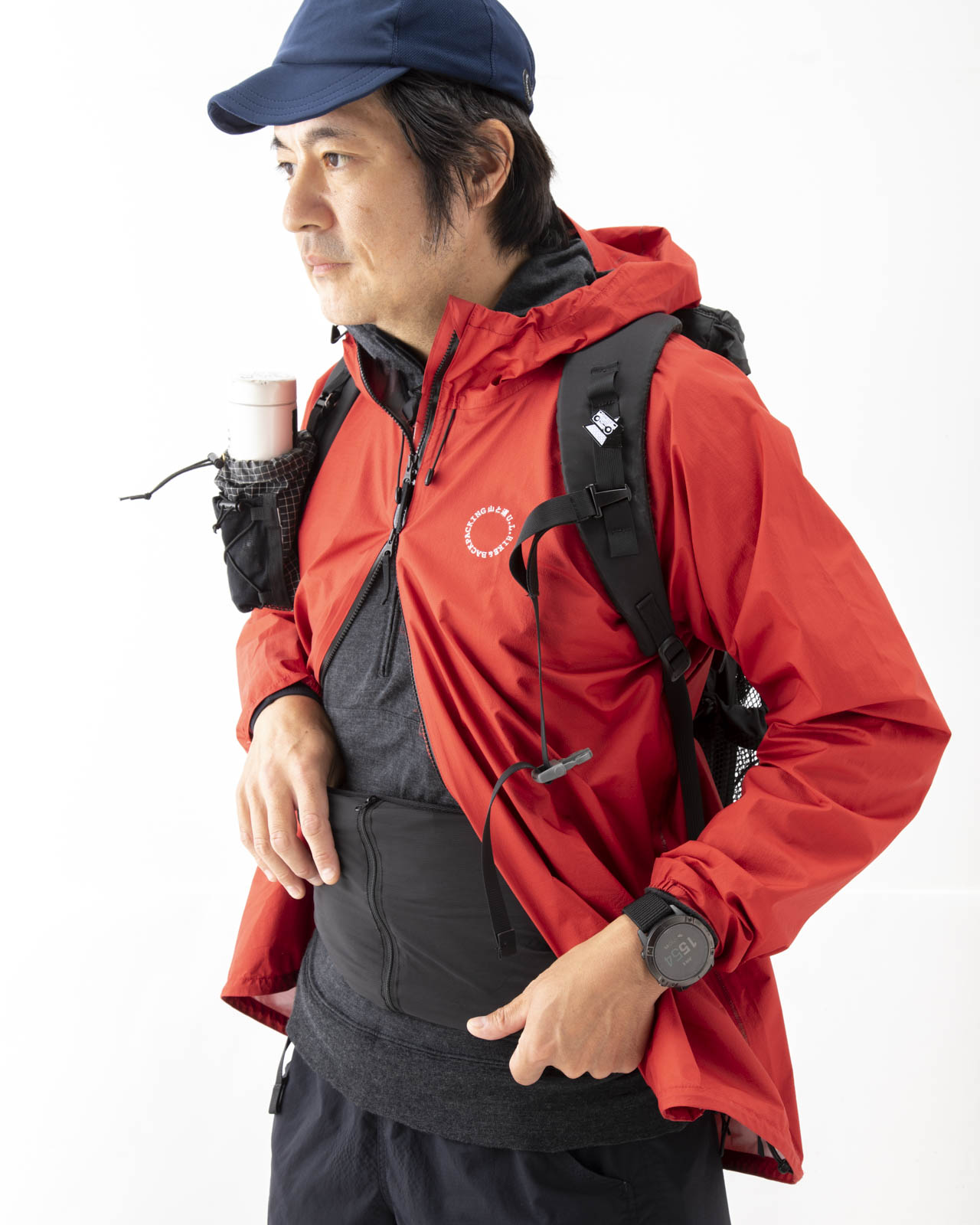
+Merino & Haramaki (Yamatomichi Alpha Haramaki & Merino Hoody)
The moisture-wicking Yamatomichi Merino Hoody as an inner layer, combined with the breathable Polartec Alpha Haramaki wrapped around the stomach, allows you to prevent overheating, while also preventing cold sweats, especially at night or in bad weather.
Tomoya That’s great idea. I should have tried the combination with the Octa or the Alpha Direct.
Kei Doesn’t your body heat go right through the layers, since active insulations are breathable?
Akira The All-weather is more breathable than other rain jackets for sure, but it’s not as breathable as regular clothing like cotton shirts. It blocks 99% of the wind, so If worn with an active insulation, it should keep you warm to a certain extent, while keeping you comfortable when on the move.
Tomoya Kei pointed out that both the All-weather and the active insulation jacket breath well, and if everything is breathable, it should get cold. But what Akira was saying, was that normal insulation jackets, Alpha Direct, and Octa all have nylon facings, so they are windproof to a certain extent. Compared to those jackets, the All-weather is less air-permeable, and so overall the windproof property is guaranteed, keeping you warm to a certain extent, right?
Akira Exactly.
Tomoya I remember once, Akira told me a story about TJAR (*26) athletes wearing a rain jacket over another rain jacket. It made sense, and I was pretty impressed. Since All-weather jackets are so light, rain jacket over rain jacket, is a logical way of layering. It’s really fun to think about what to wear and try on one item after another. Should I wear rainwear over the All-weather? Or something warm and compact? This might sound a little reprehensive but the All-weather is not suitable for someone who can’t be creative with layering.
*26: TJAR =Trans Japan Alps Race. Supposedly the toughest mountain endurance race in Japan, running 415km from Toyama Bay to Suruga Bay in less than eight days, traversing the Northern Alps, Central Alps, and the Southern Alps.
Akira I agree.
Kei I appreciate that Yamatomichi is actively talking about the gear you have created, sharing with us the reasons for developing these products along with the potential risks to deepen our understandings. I think this is what makes Yamatomichi so special. I get a lot of ads about rainwear while surfing the net, probably because I do extensive research about it (laughs) and they up-sale their products, telling us that this one jacket will meet all your needs. There is no information about the advantages, disadvantages, or specific features of the product. Looking at these ads, it makes me wonder if the majority are able to see through this and do research on their own. I think it’s really important that manufacturers point out both the advantages and disadvantages of their product. How Yamatomichi is communicating with the customers, makes the All-weather series a valuable product in this market.
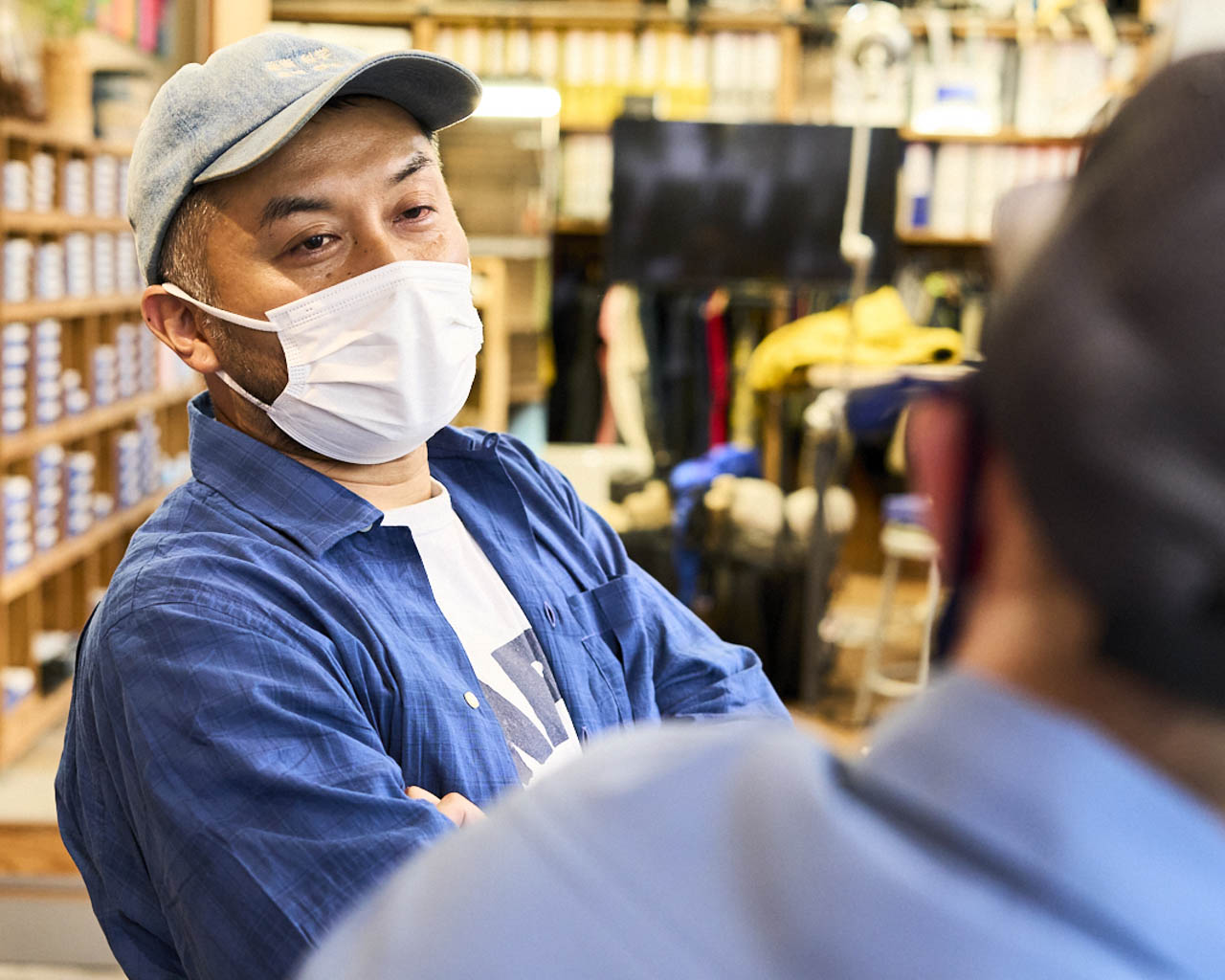
Akira I’m happy to hear that.
Tomoya We have had this same conversation the magazine PEAKS in a feature about Pertex’s fabrics. We talked about how rainwear will evolve in the future. Is rainwear going to be activewear focusing on breathability? Or is it going to be more focused on insulation to keep you warm? After all, the fact that All-weather Activewear came out was evolutionary. We tried it and found out that it was extremely unique. Yamatimichi’s rainwear, including the UL Rain Hoody, is so experimental and full of character. Getting rid of the front zipper, adding a uniquely shaped roomy hood was a very innovative design. The All-weather’s novelty is, of course, the fabric. Yamatomichi’s products look simple and smart, and are extremely ultralight-oriented.
Everybody (Laughs)
Tomoya I often tell my customers that Yamatomichi is a wolf in sheep’s clothing.
Masaaki The last piece of the puzzle in rainwear has been air-permeability, which is now perfected by the All-weather.
Tomoya I’m not sure if it might the first piece or a new puzzle…
Akira I think it’s a new beginning.
Rainwear Used as Activewear
Akira Now we finally have rainwear that can be used as activewear. Is this a big deal for hikers and runners?
Tomoya Huge. I don’t know what this means for those that started hiking within the last 10 years, but for me, yes. Especially for hikers like me, who have been dreaming of a windshell that can double up as rainwear, who likes solo-hiking. Also for those high-paced lone wolf hikers. If you have this All-weather, you won’t need a windshell, and the number of items can be reduced. I don’t know if the All-weather will be the final answer, but at least it gives us a good opportunity to reconsider what to carry for hiking. But we have to be careful, since the All-weather is so unique that it’s not necessarily the best, especially for casual hikers. I can say that the All-weather is more beneficial for trail runners than hikers. It’s that unique, in a good sense.
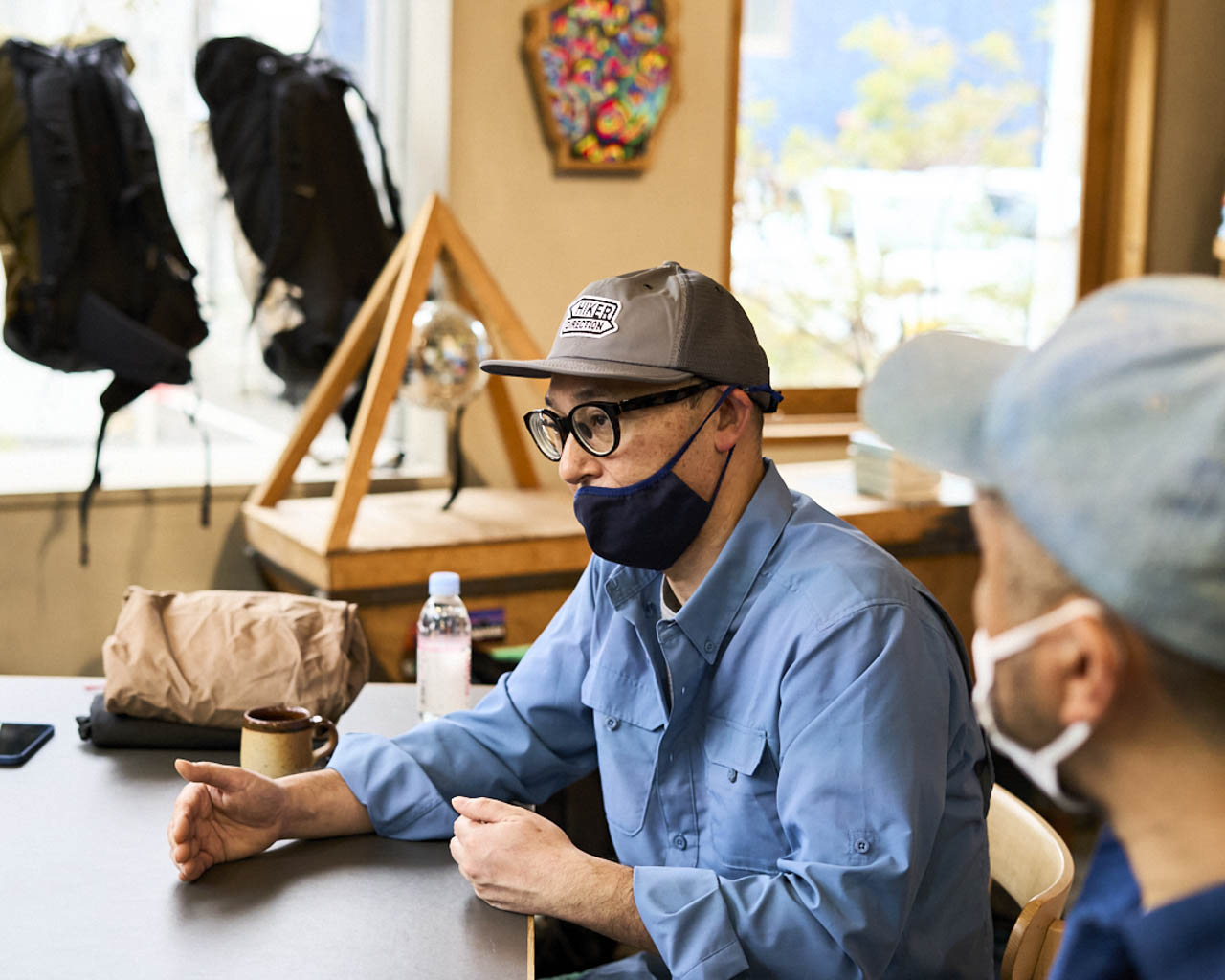
Kei The breathability when running is particularly impressive if you are a runner. I want to mention that the All-weather Pants are light and easy to move in, and especially beneficial for trail runners. The North Face Strike Trail Pants (*26) and OMM Halo Pants (*27) are the only lightweight rain pants of the kind. In terms of air-permeability, the All-weather Pants is the only product in this category.
*26: Strike Trail Pants are lightweight waterproof rain pants by the North Face. They are made of 3-layer ultra-thin waterproof and moisture-permeable fabric, and the jacket version is also used by many trail runners because of its lightness of about 110g. The pants are also lightweight at 130g in size L.
*27: Halo Pants are made of 2-layer waterproof and moisture-permeable fabric, and weighs only 69.5g in size S.
Akira I highly recommend the All-weather Pants. The fabric is firm so it does not stick to your skin. I didn’t expect it to be this superior as activewear.
Tomoya At my shop, I tell my customers that Teton Bros’ Breath Pants (*28) can be worn over underwear. They are heavy but tough, so they are even suitable for bush-walking. But the All-weather may be another option if they are so light, air-permeable and can be used as normal trousers. I haven’t tried them yet so I cannot be sure, though.
*28: Breath Pants Breath Pants are rain pants by Teton Bros. They used to be made of Polartec Neoshell, but the recent version uses their proprietary waterproof moisture-permeable Aqua Breath, co-developed by Toray and Teton.
Masaaki The All-weather Pants are so comfortable that you can use them as pajamas.
Tomoya Indeed, if they are this breathable, you could sleep with these pants on to protect your sleeping bag from getting dirty.
Akira Conventional rainwear is cold if you wear it to bed because they don’t transfer heat well. However, with the All-weather, it transfers heat well, and the sleeping bag is heated more easily.
Tomoya You’ve tried this before?
Akira I have yet to try the UL All-weather Pants, but I’ve tried the Jacket. The All-weather Jacket did transfer heat indeed. I’m definitely reviewing my gear list.
Takahiro If a customer was having trouble deciding which nanofiber jacket to choose, All-weather, Neoshell, or Futurelight, what’s your advice?
Kei The All-weather is ultralight, whereas the Futurelight has elasticity. So, “lightness or flexibility?” would be the choice.
Tomoya We don’t sell the Futurelight at my shop, so we have two choices: All-weather or Neoshell. I can guarantee that there is nothing as thin as this in the NeoShell product line, so in terms of lightness, the All-weather is recommended. But I am reluctant to use the All-weather for winter hiking now because it’s really thin. Therefore, the temperature is the selling point. If the temperature drops to sub-zero or close to zero, the Neoshell may be my first choice. But if it’s not so cold, like above 5 degrees Celsius, the All-weather works just fine. That’s probably how I would explain it to my customers.
Akira Thank you for your insights. I think the All-weather is made of thin fabric, but if you become creative with your layering, it can be suitable even in cold weather.
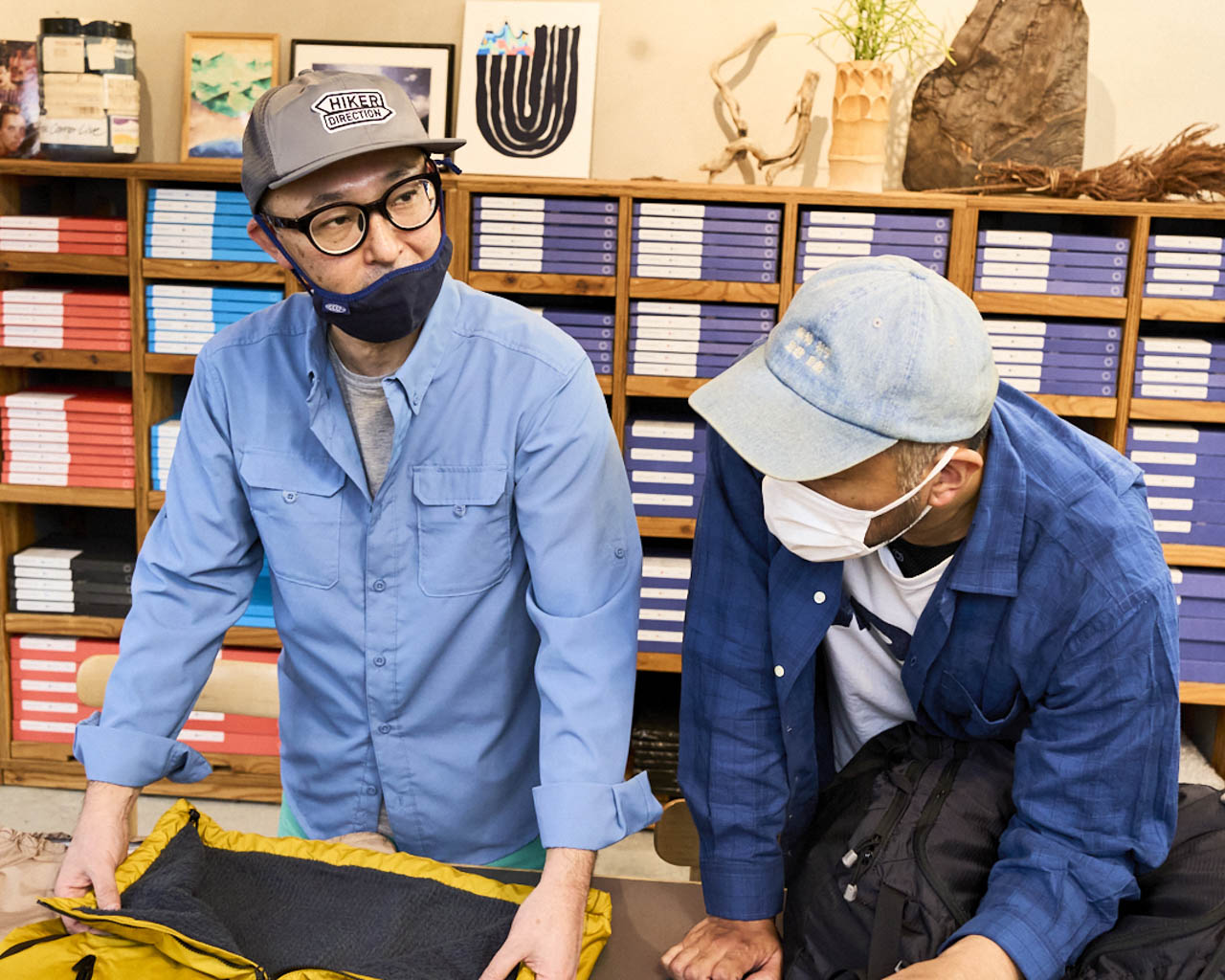
Kei The All-weather might just be the trigger for the next innovative development in gear.
Akira Precisely.
Tomoya I have a lot things I want you to make because the All-weather has inspired me and given me many ideas. It’s really fun to think about the endless possibilities.
Masaaki Tomoya’s packing was already perfected. But with the All-weather coming into the spotlight, he just might have to update it.
Tomoya Thinking about what to layer it with, and what size to choose. It brings me so much excitement in setting up a gear list. I knew Yamatomichi had been developing innovative rainwear, but it exceeded my expectations. I am totally blown away by the All-weather!
【THE END】








